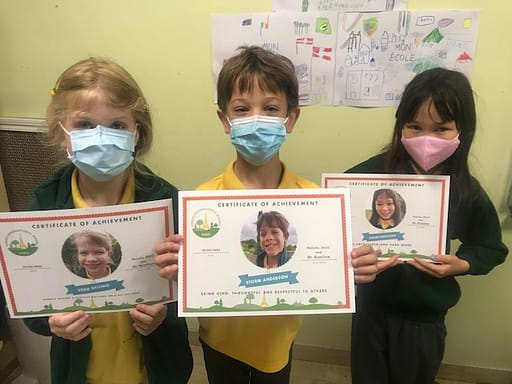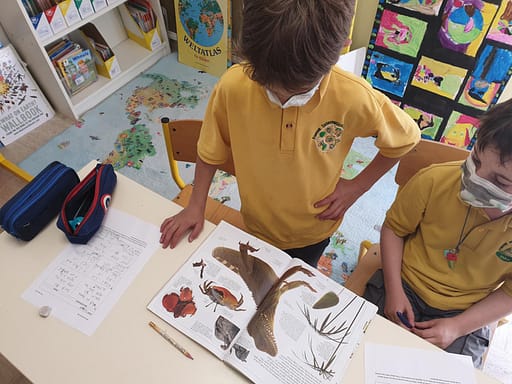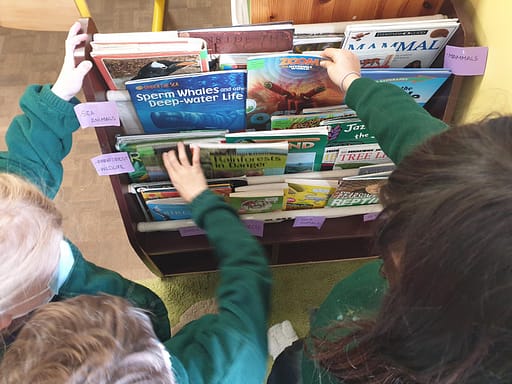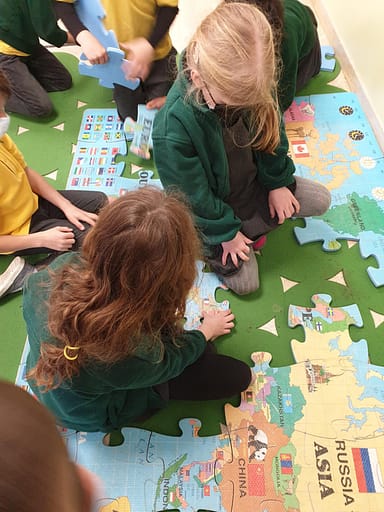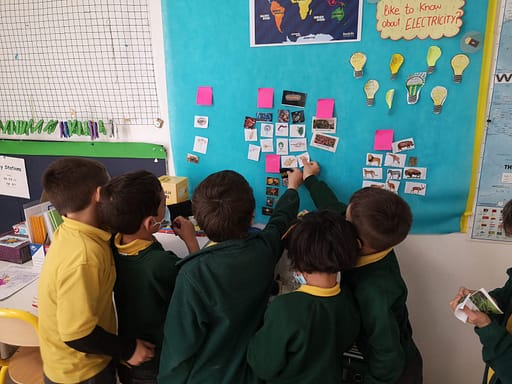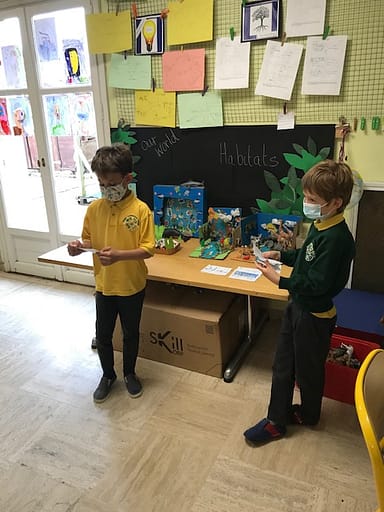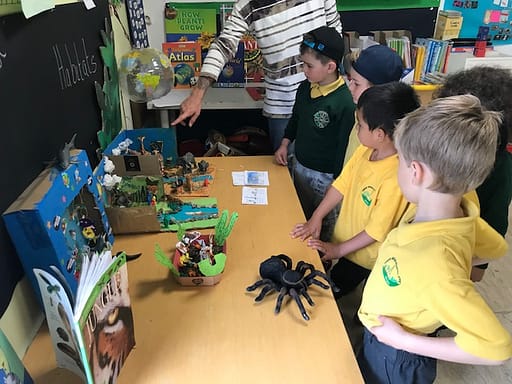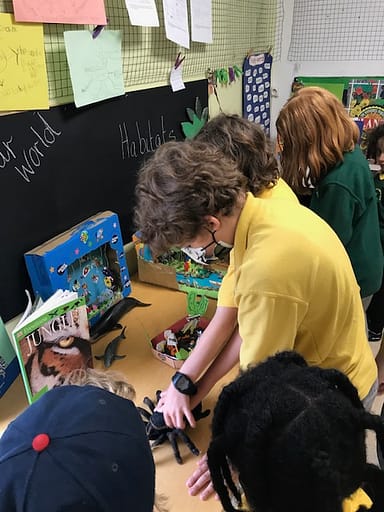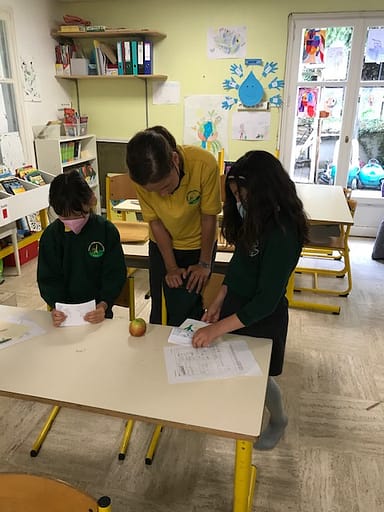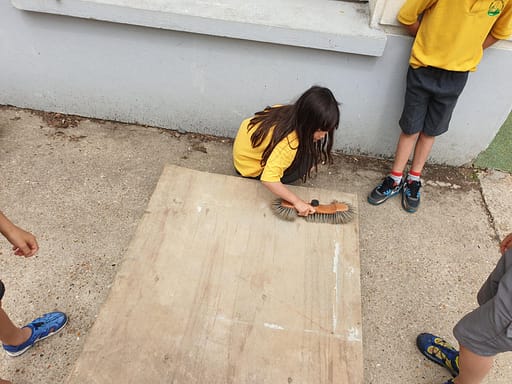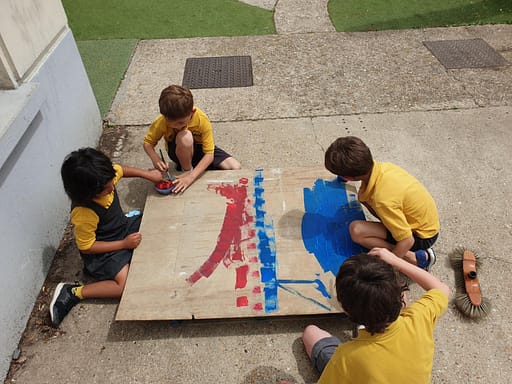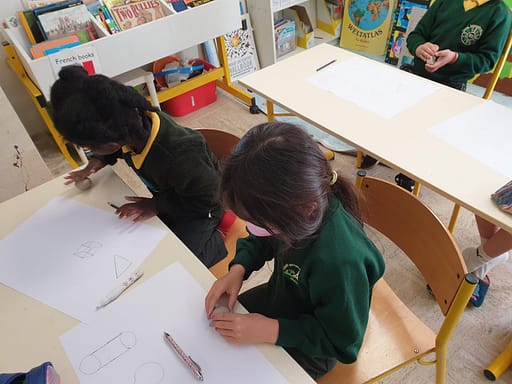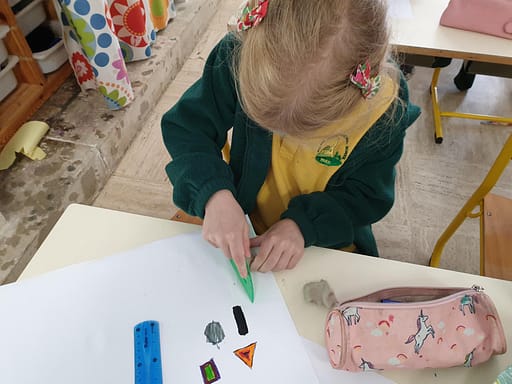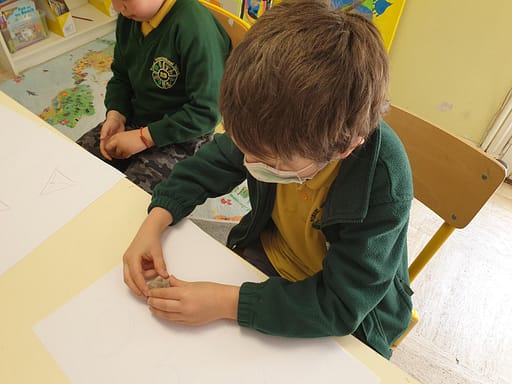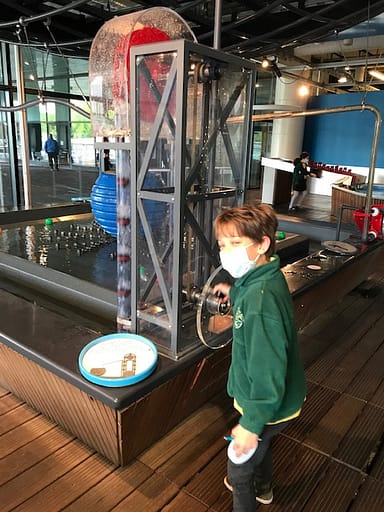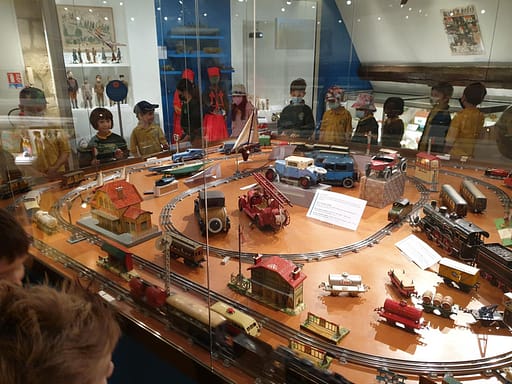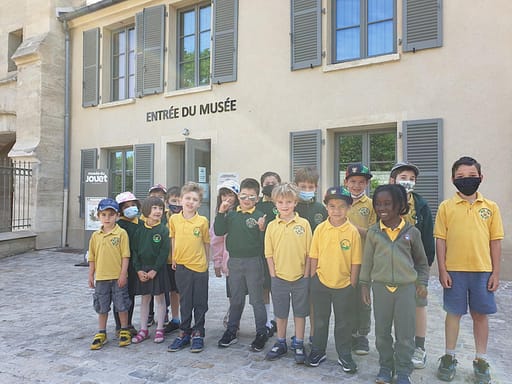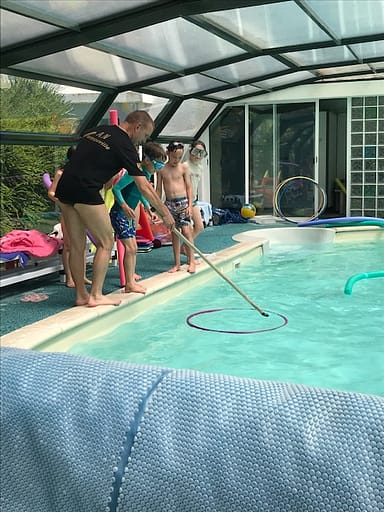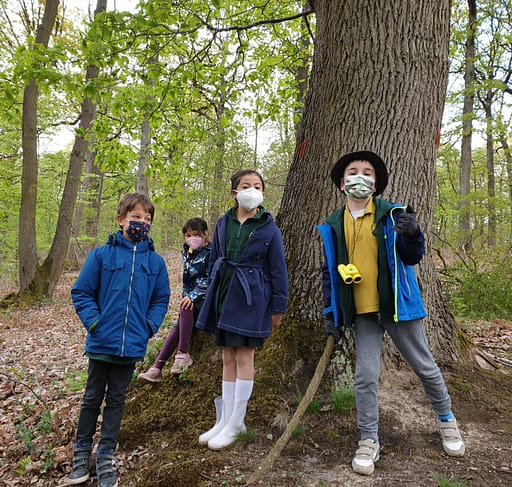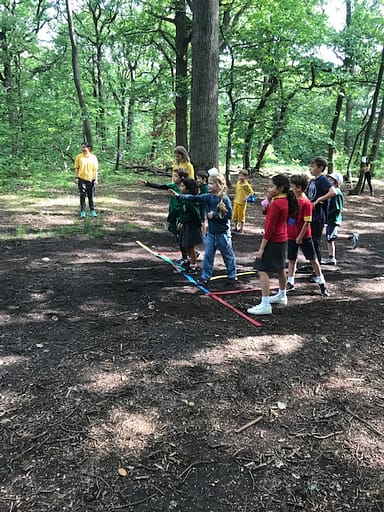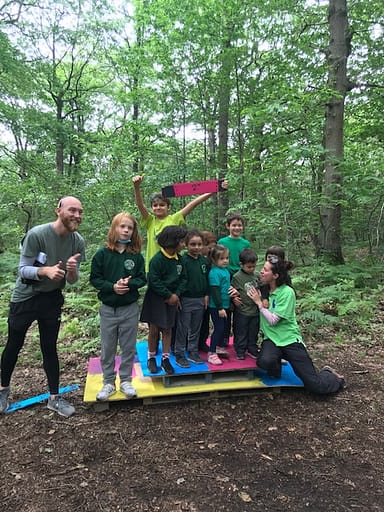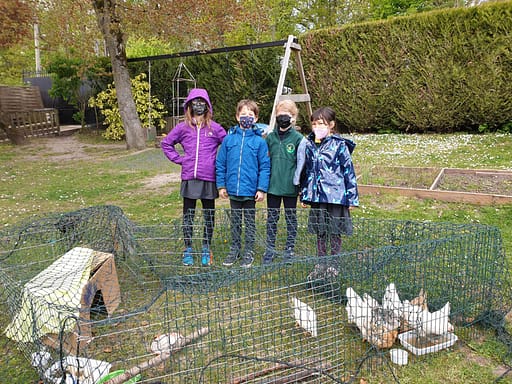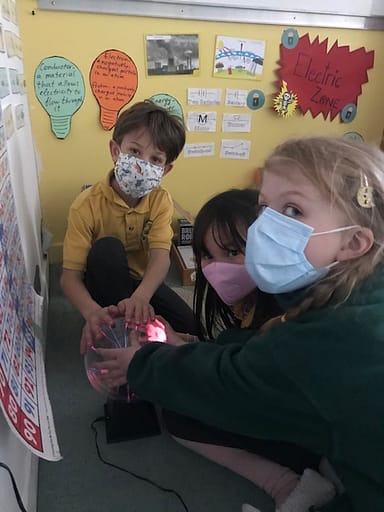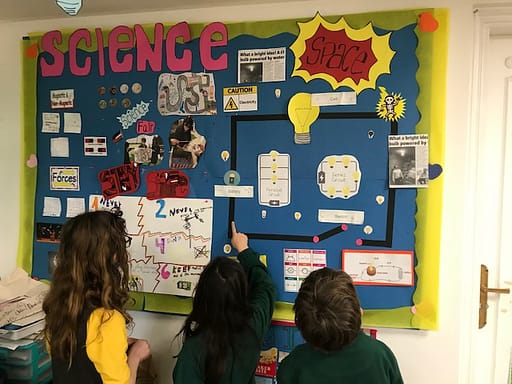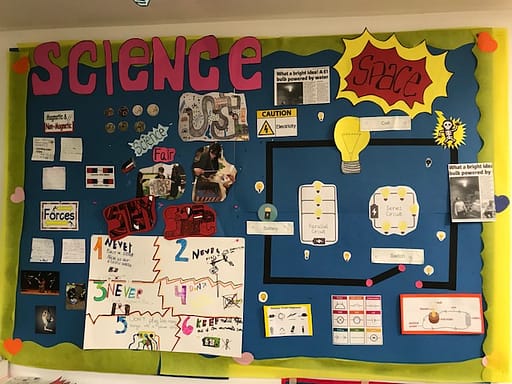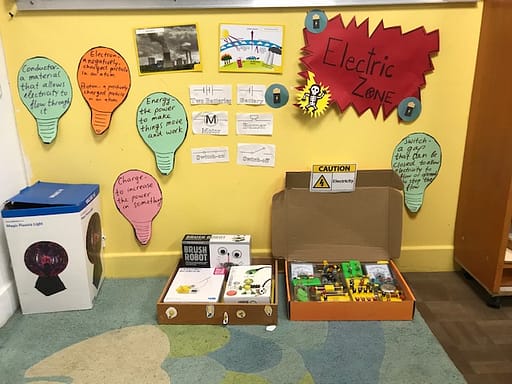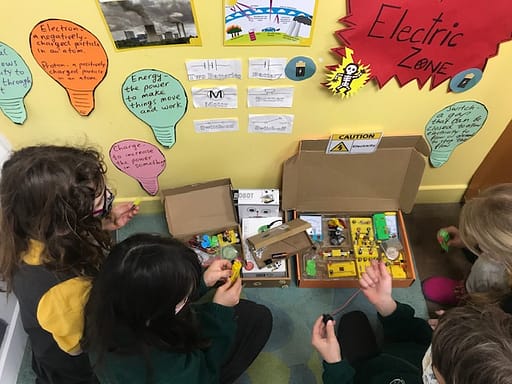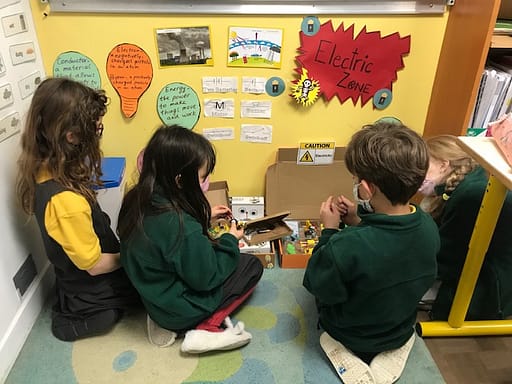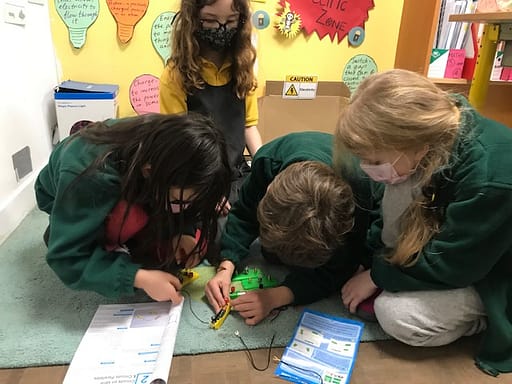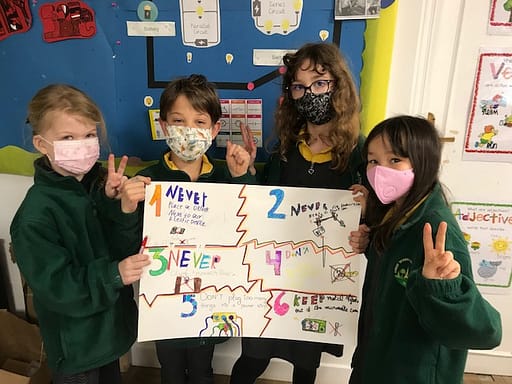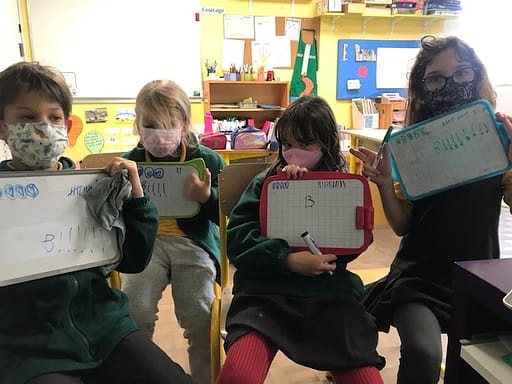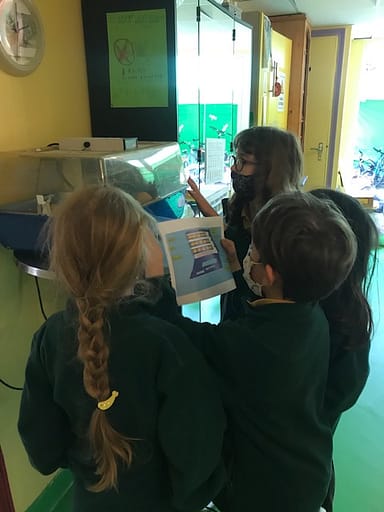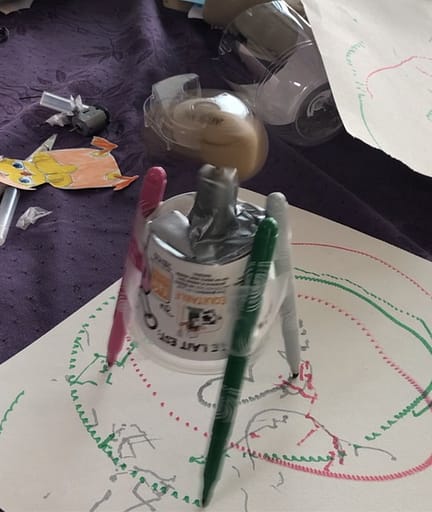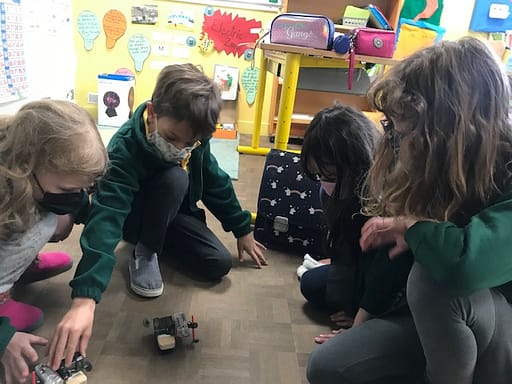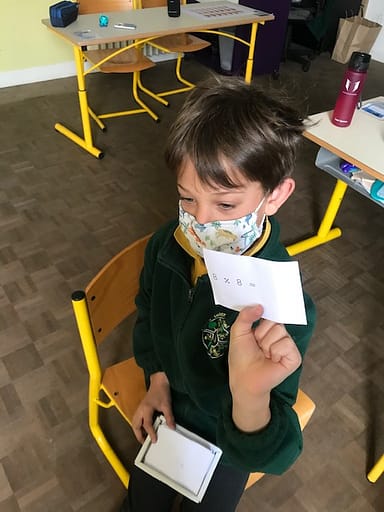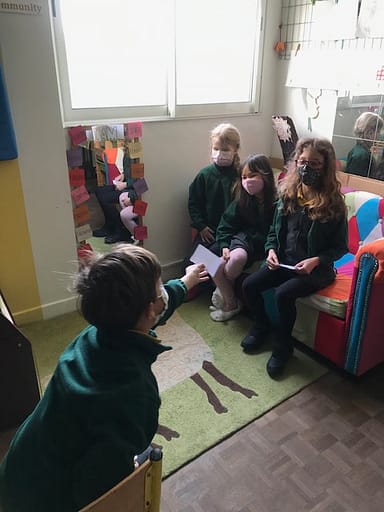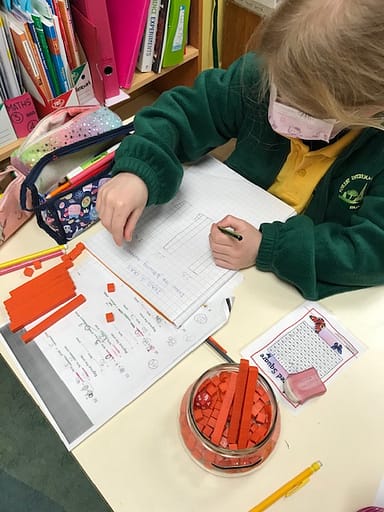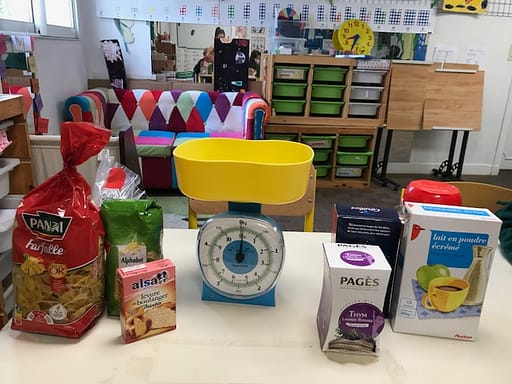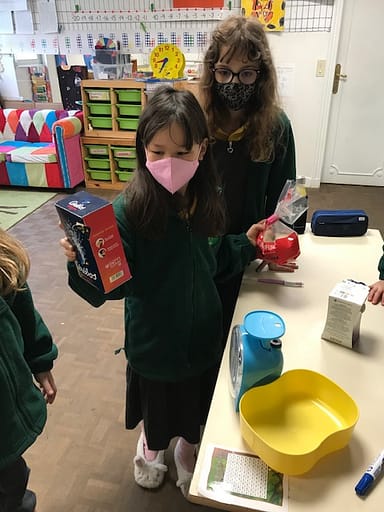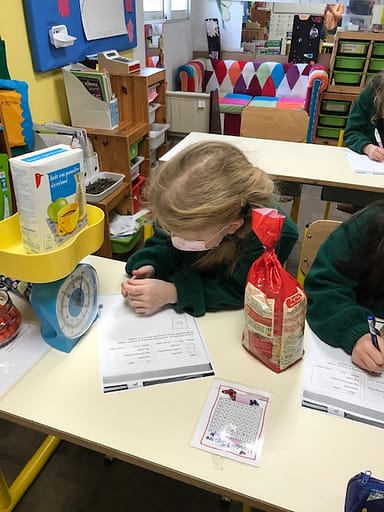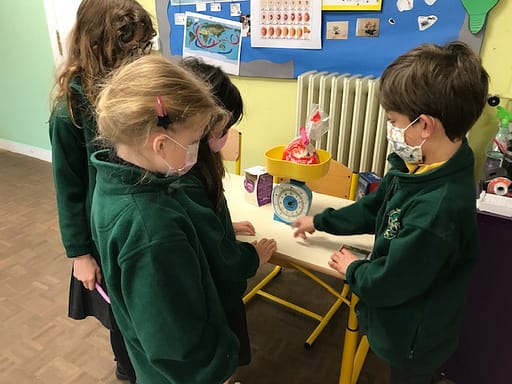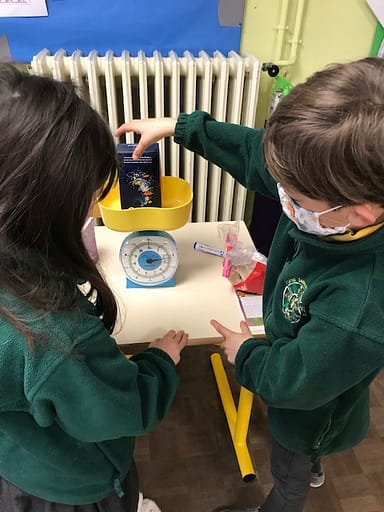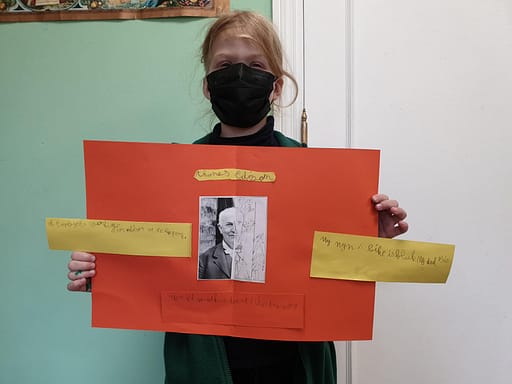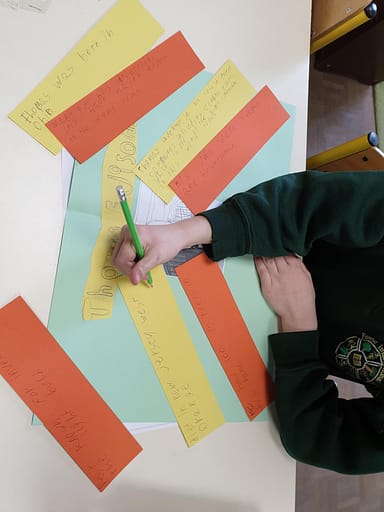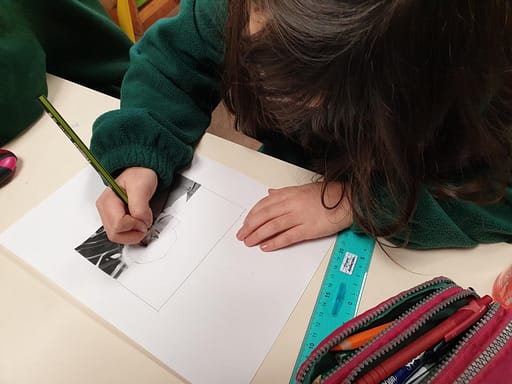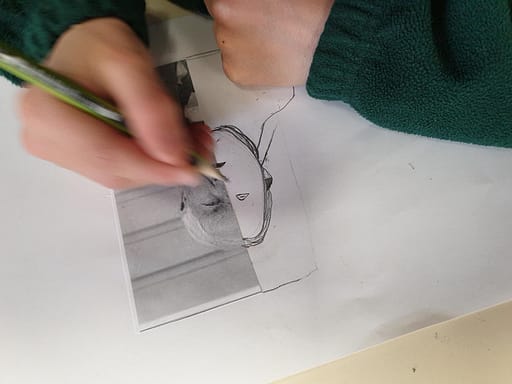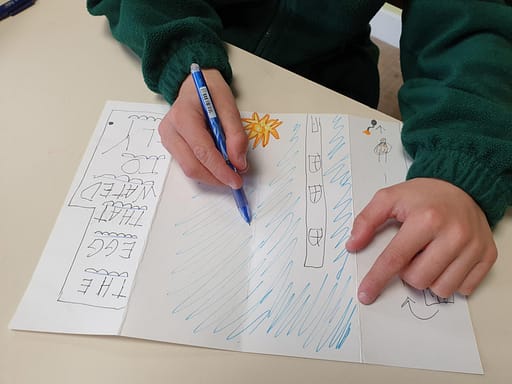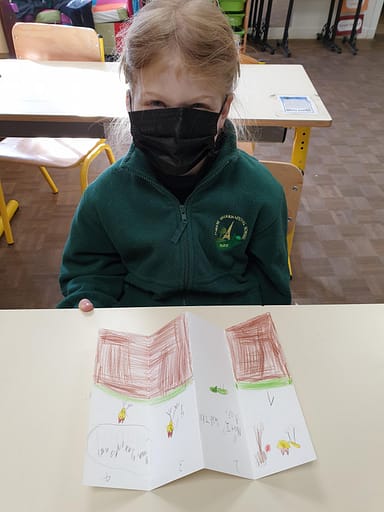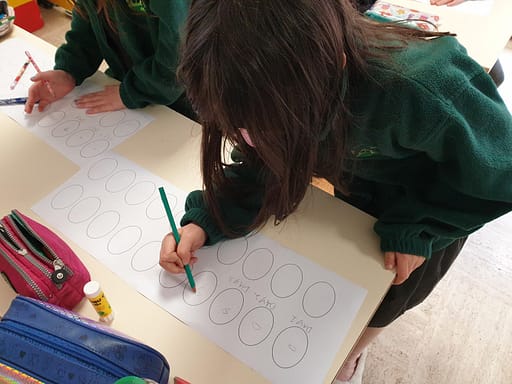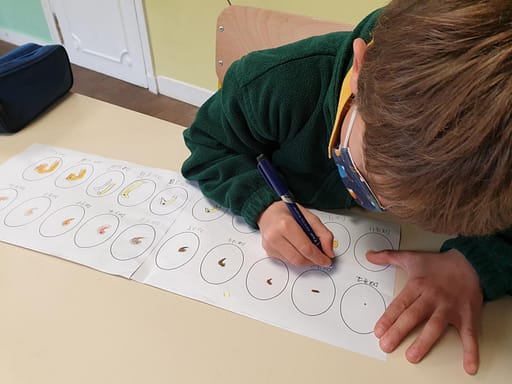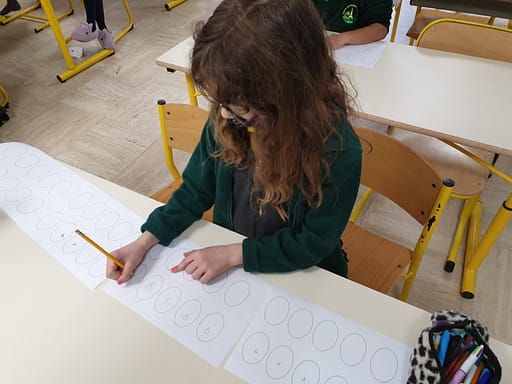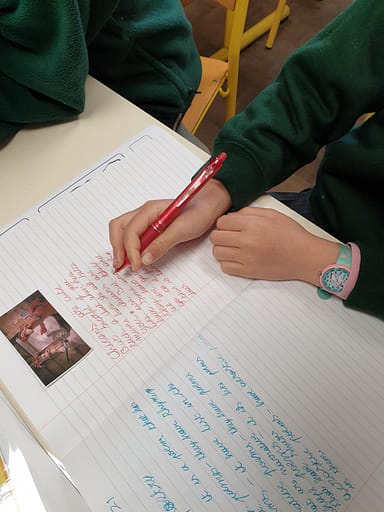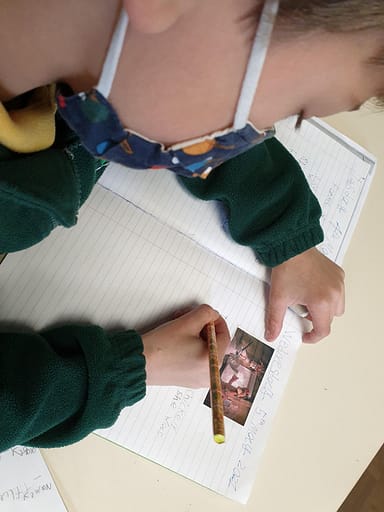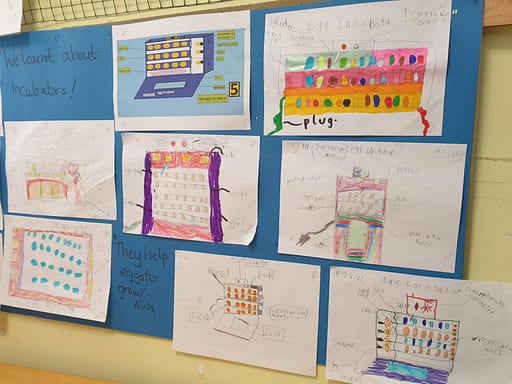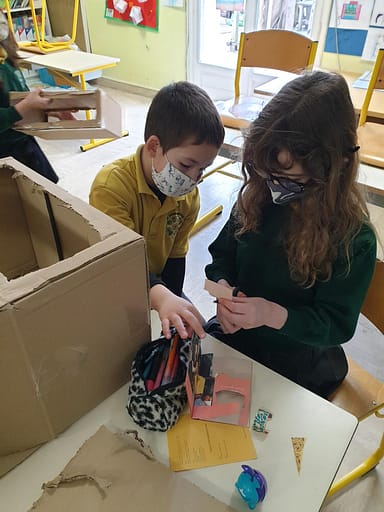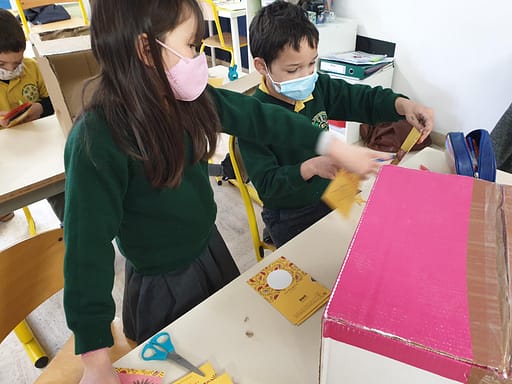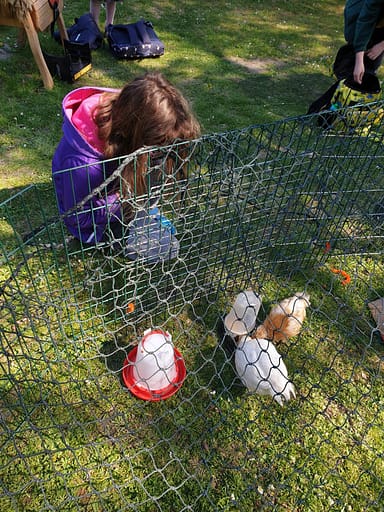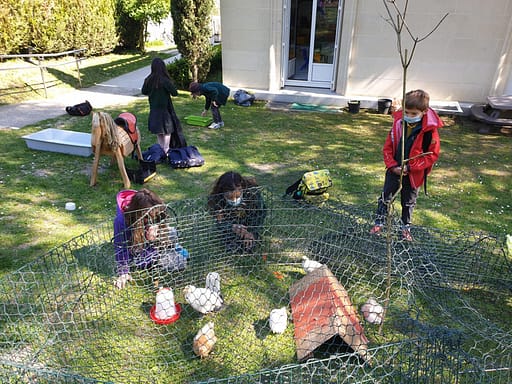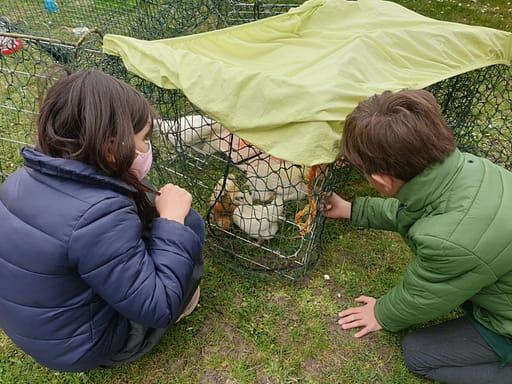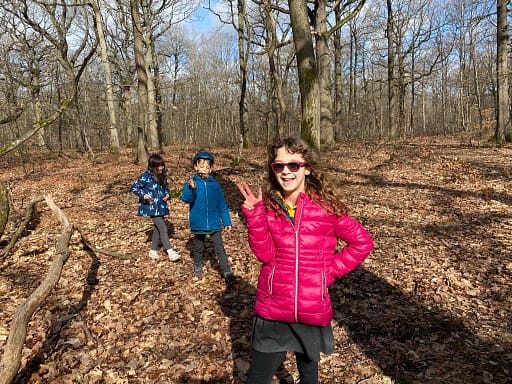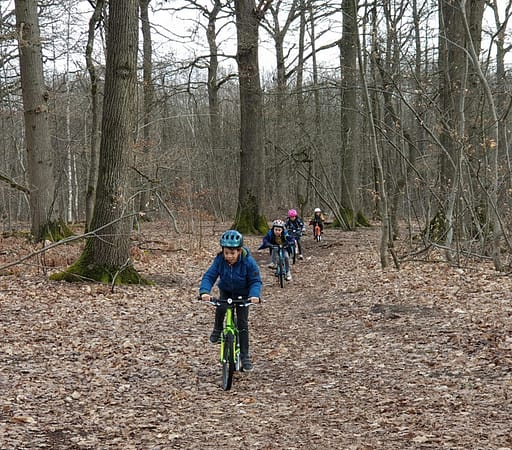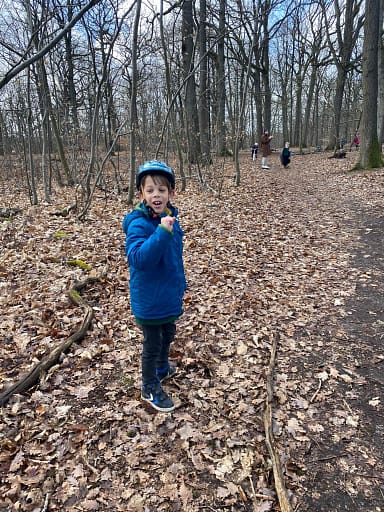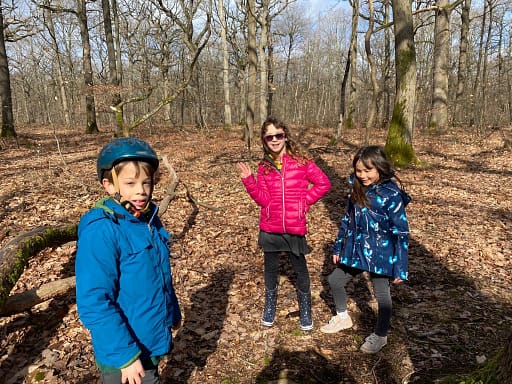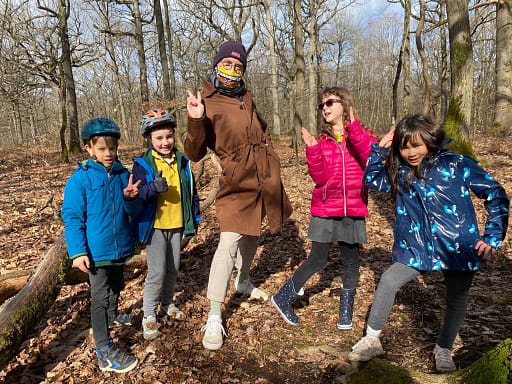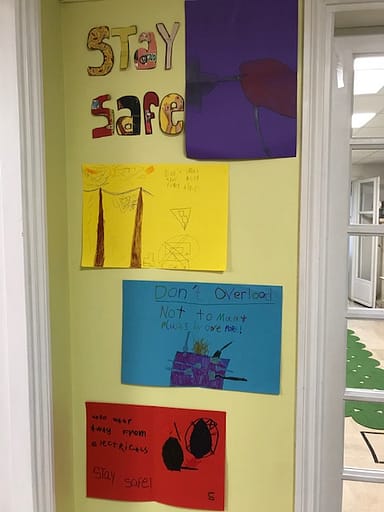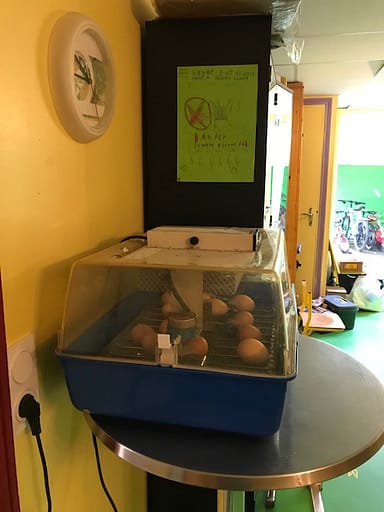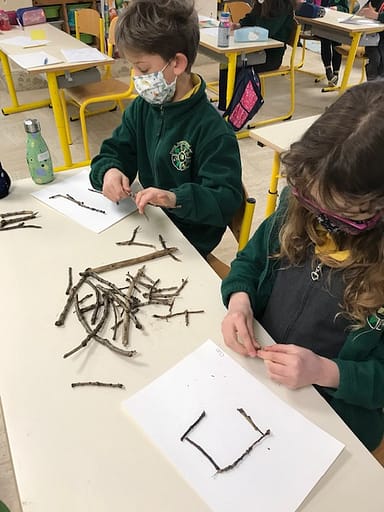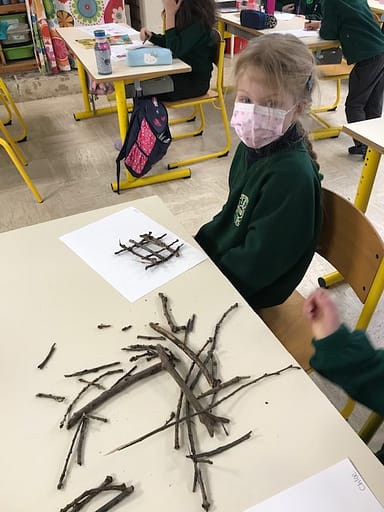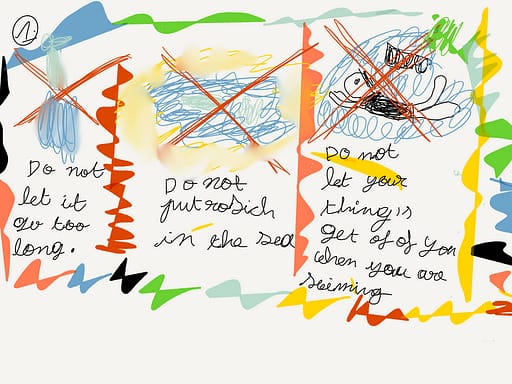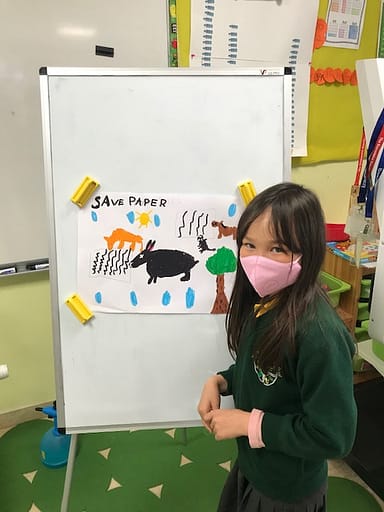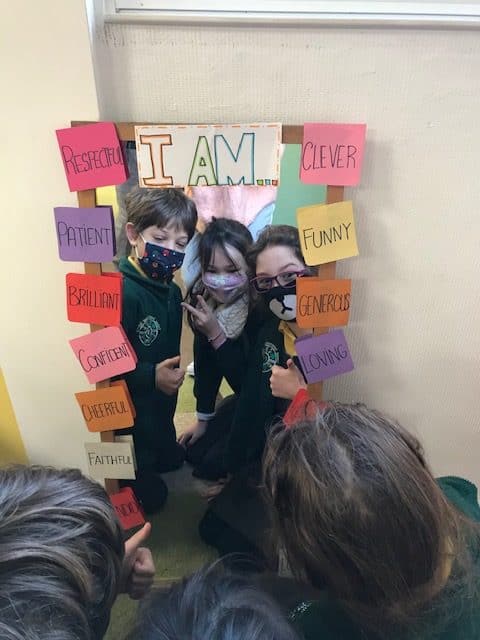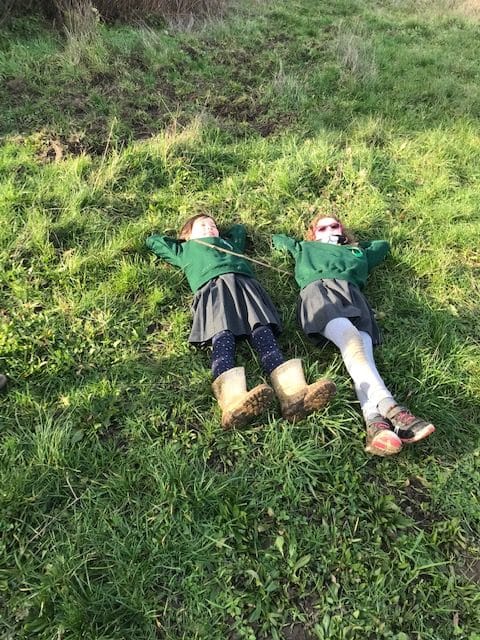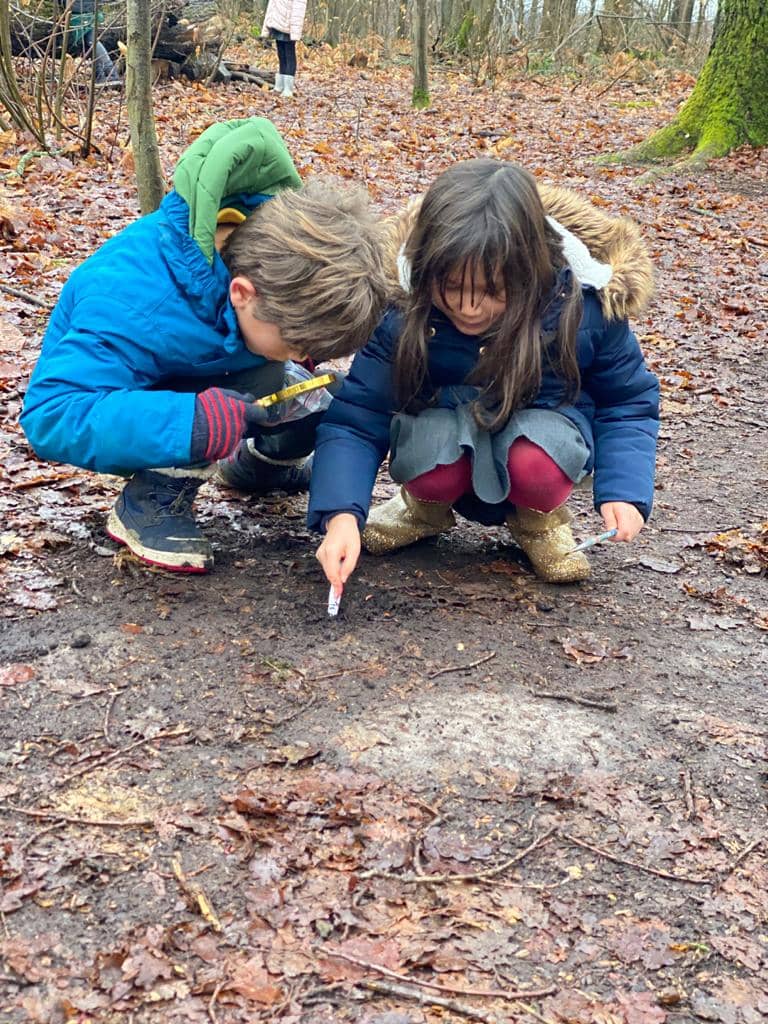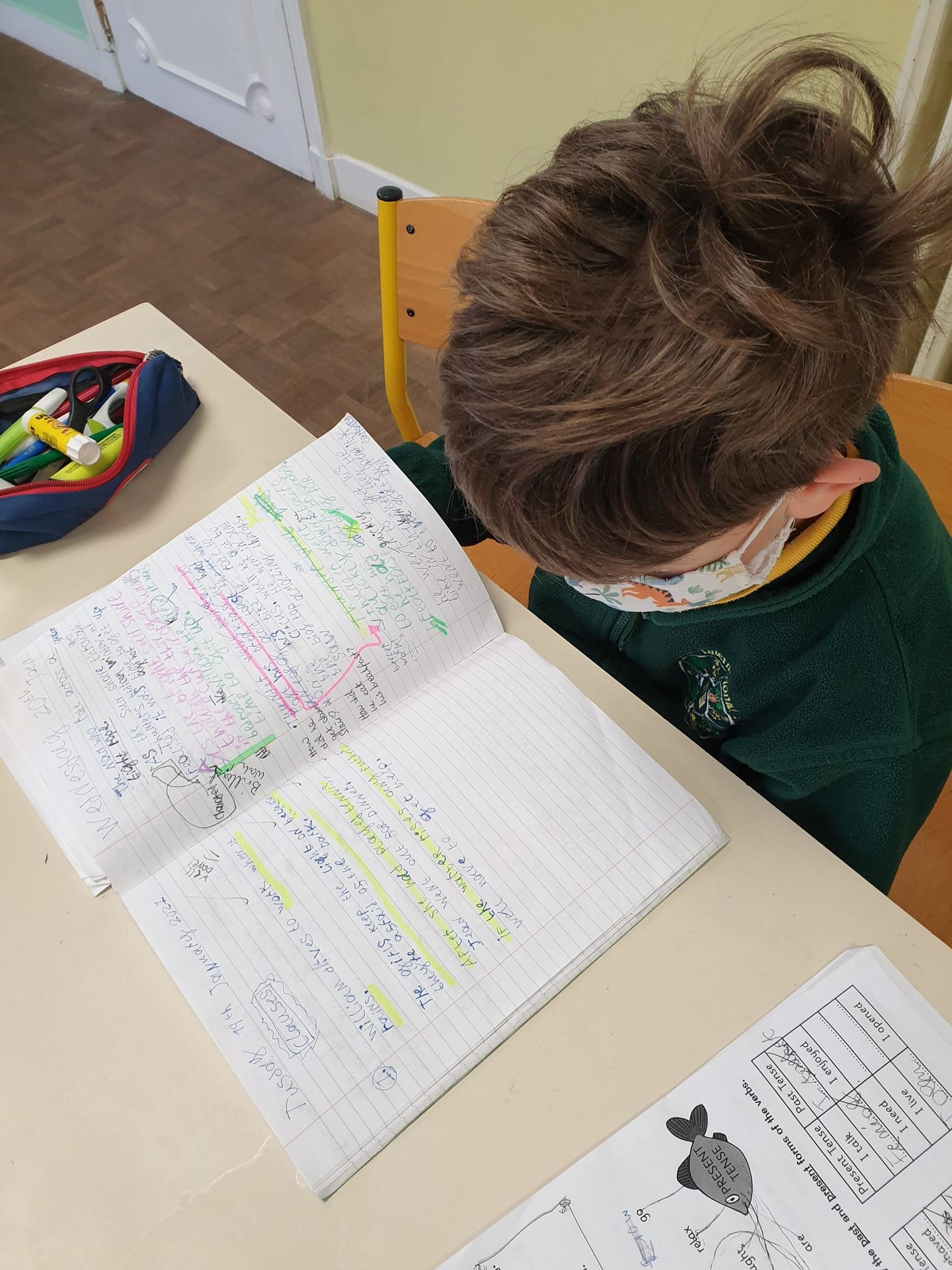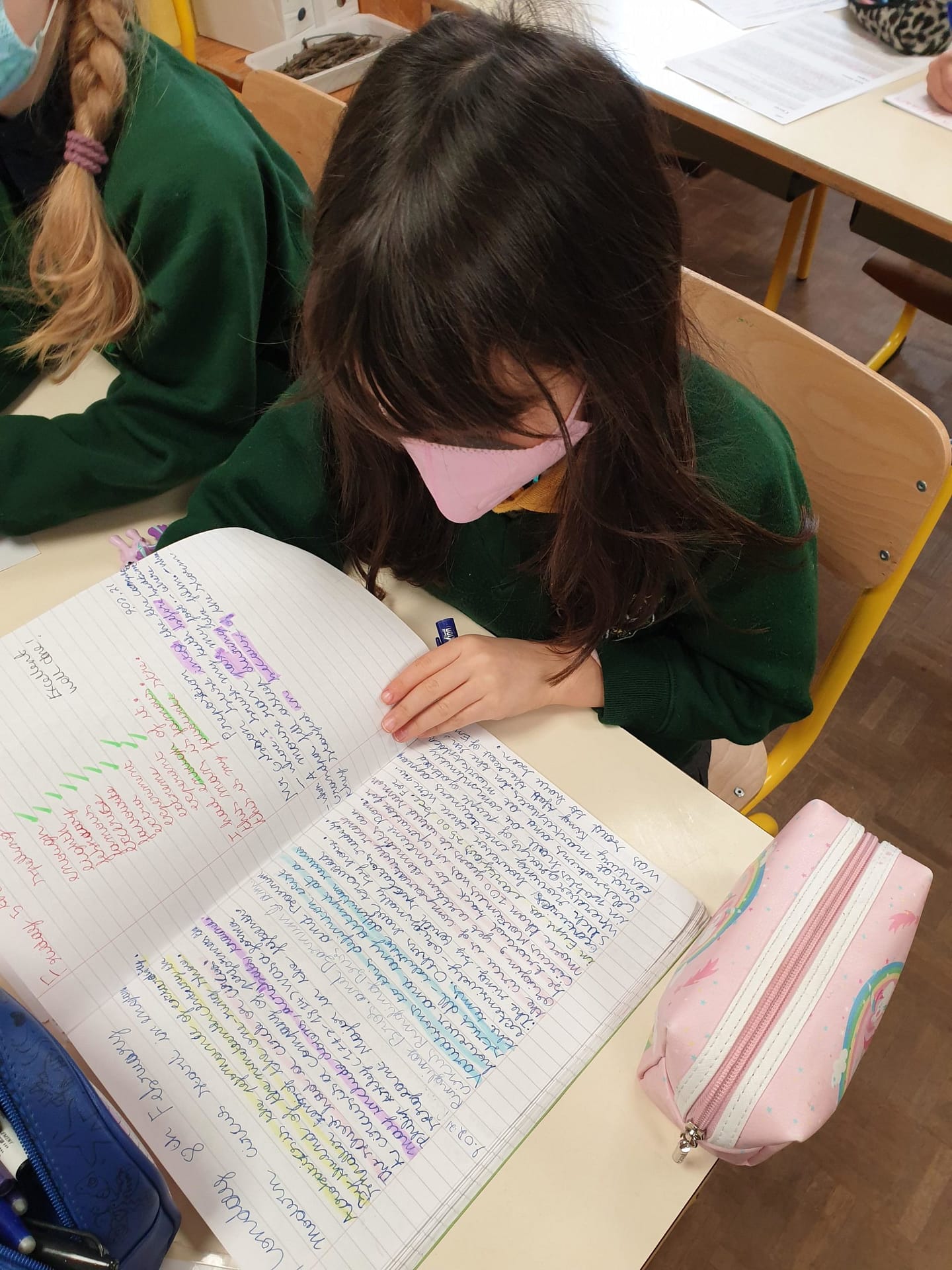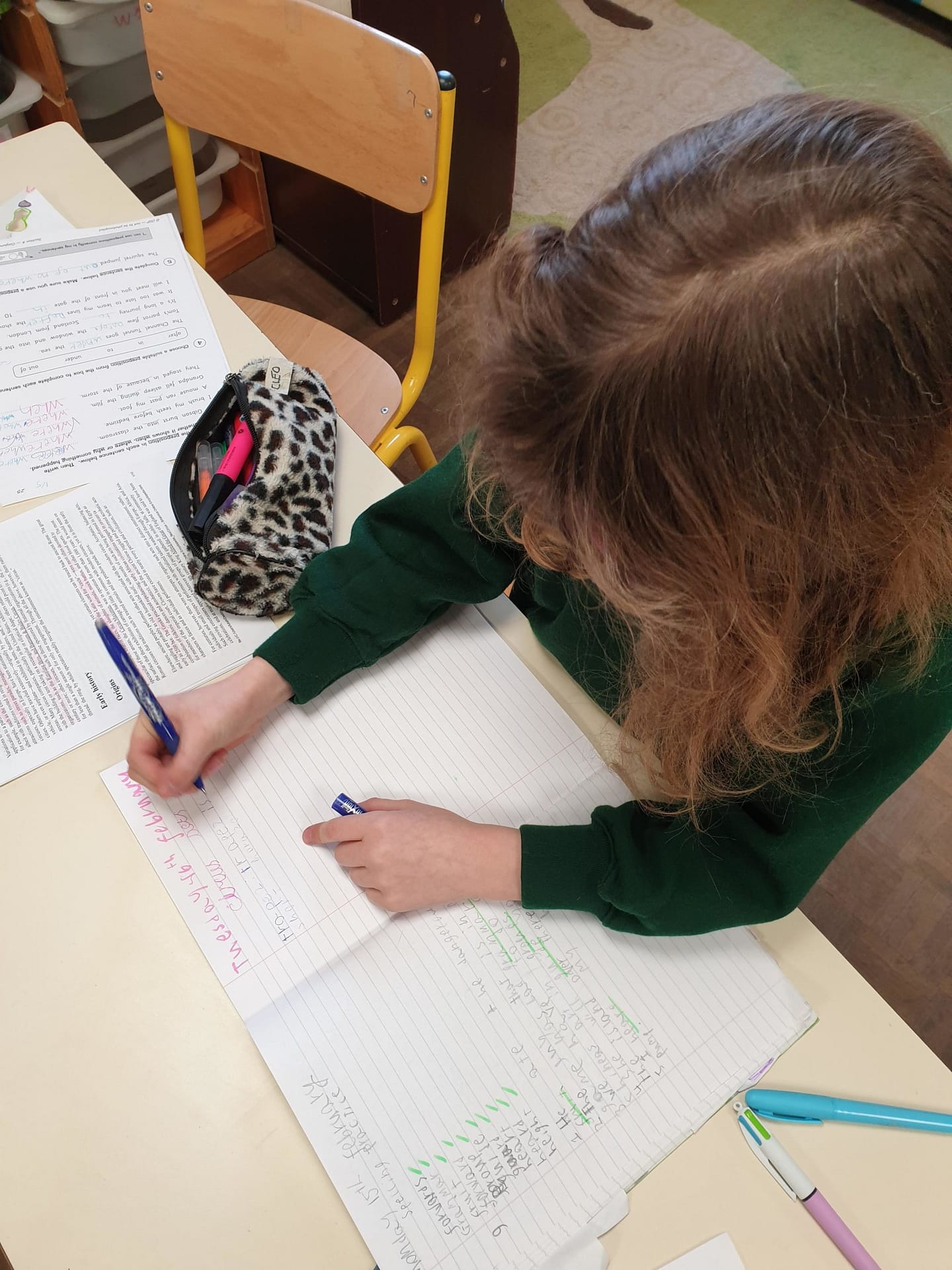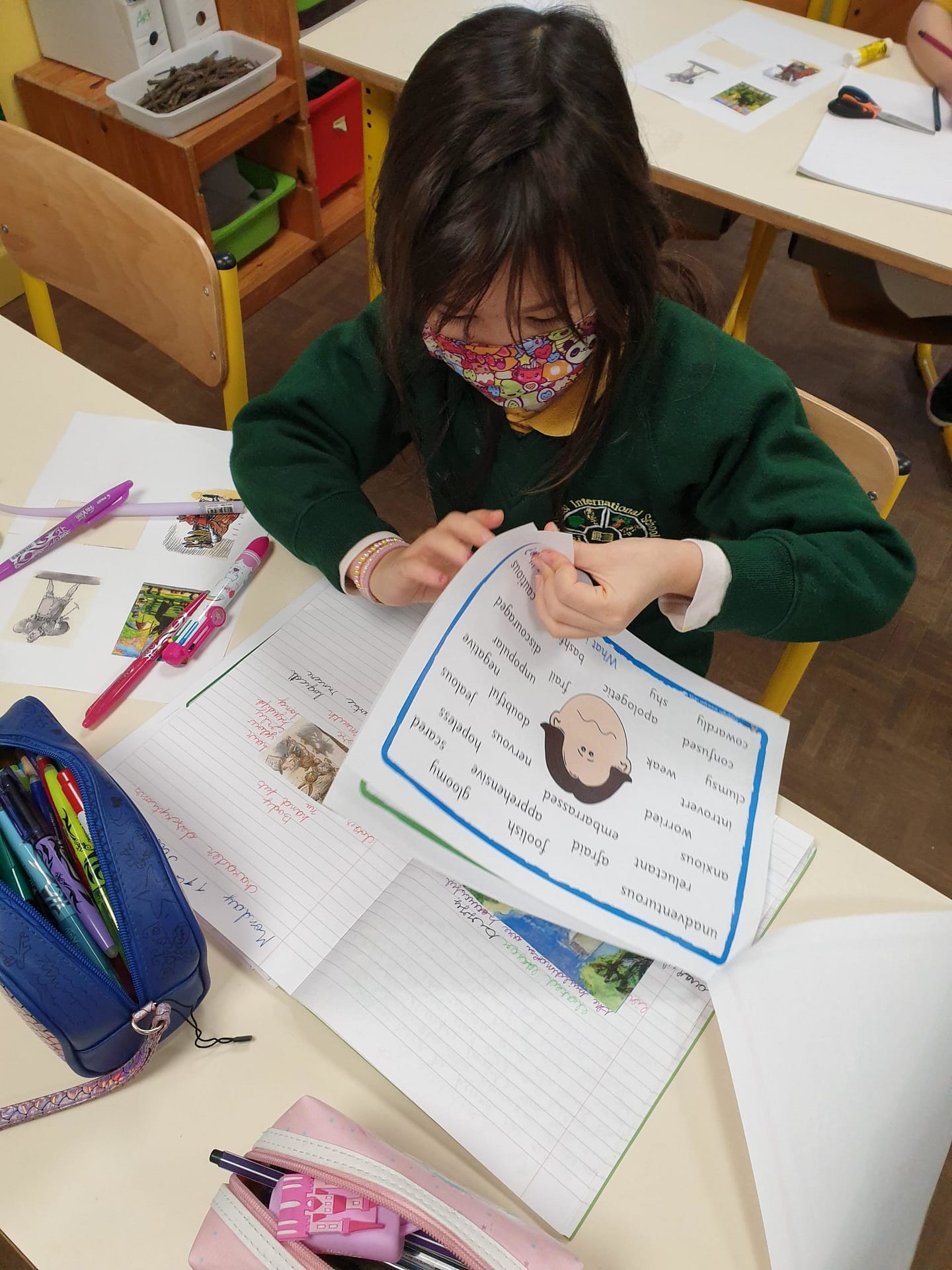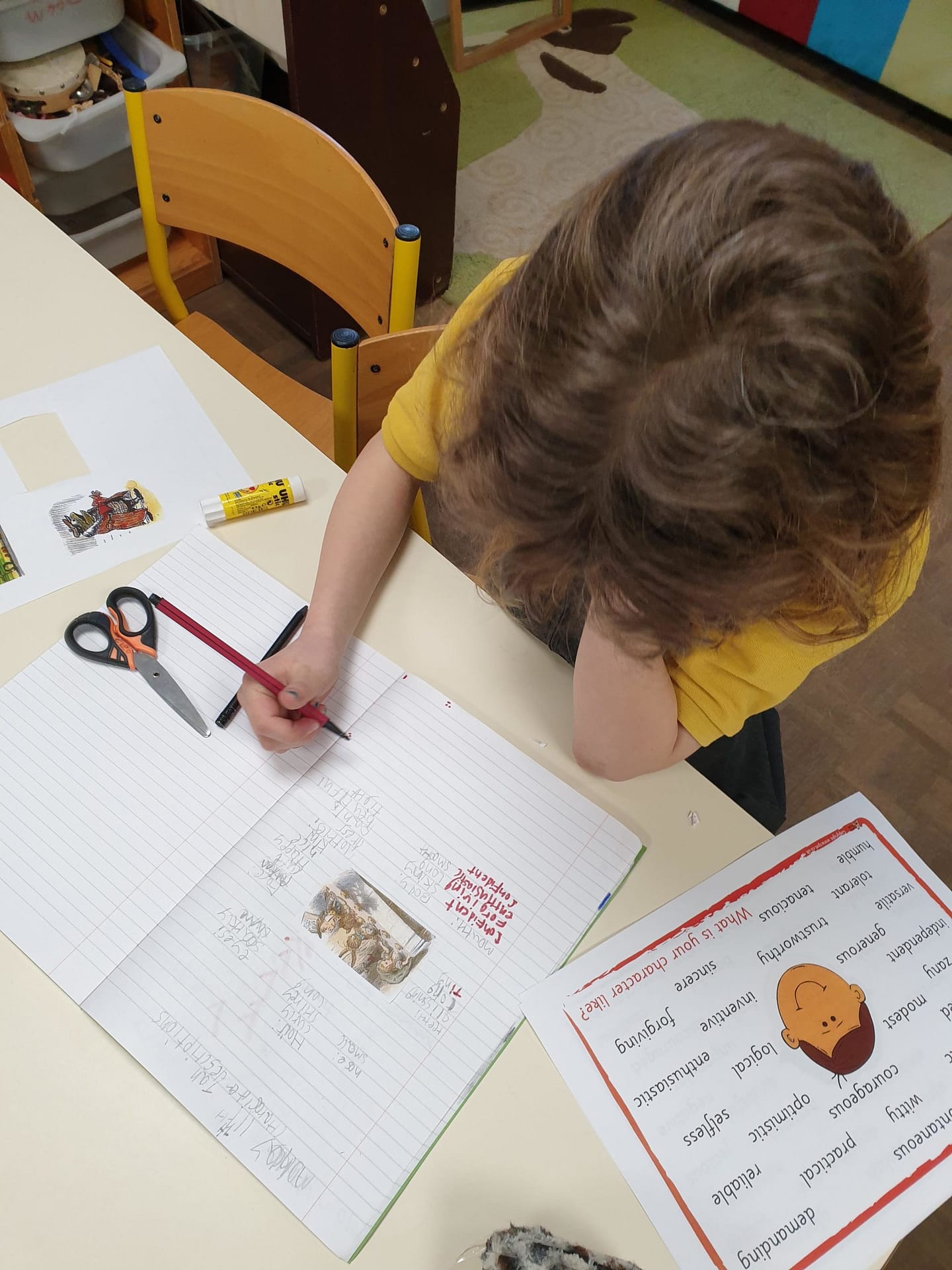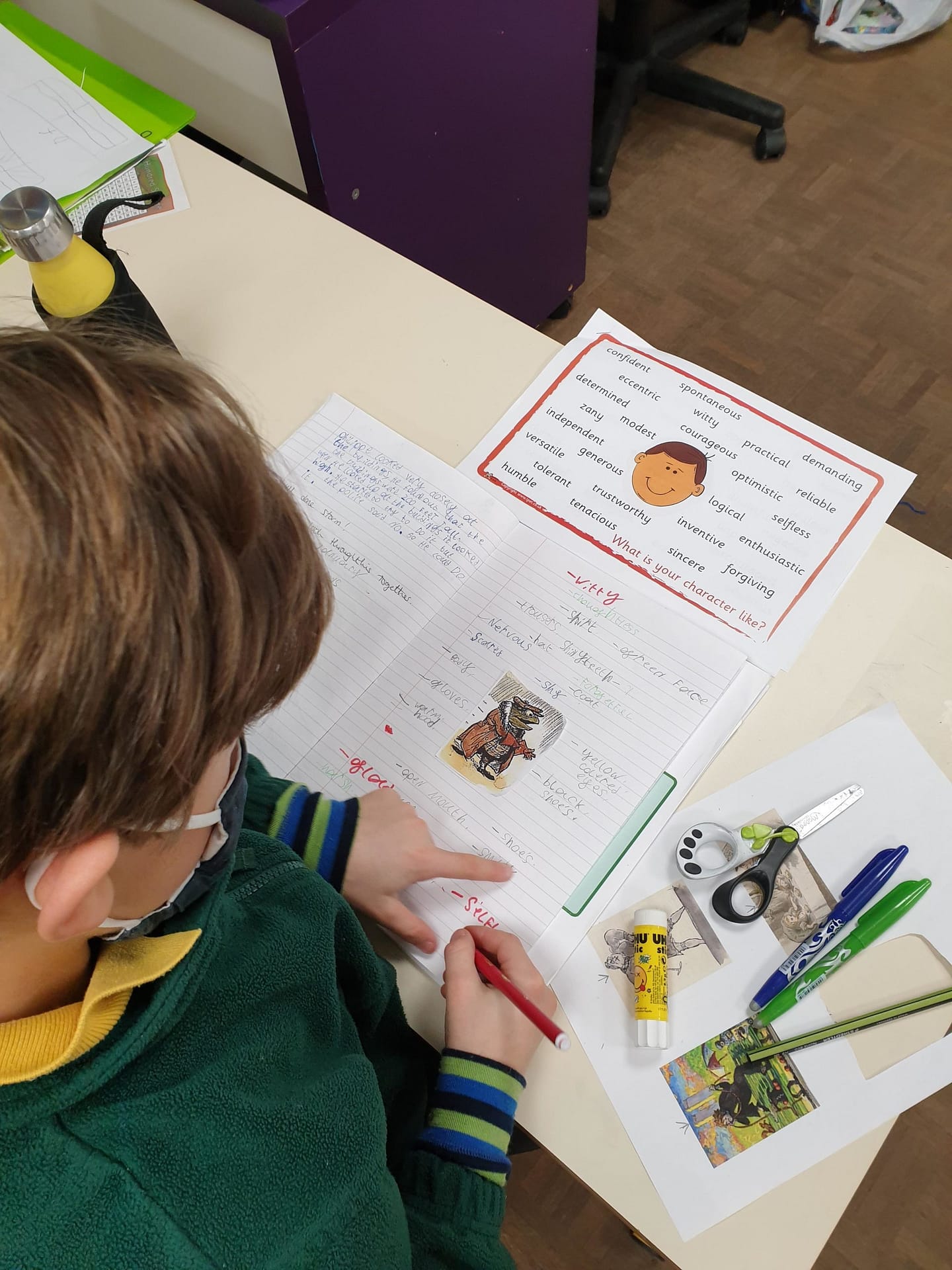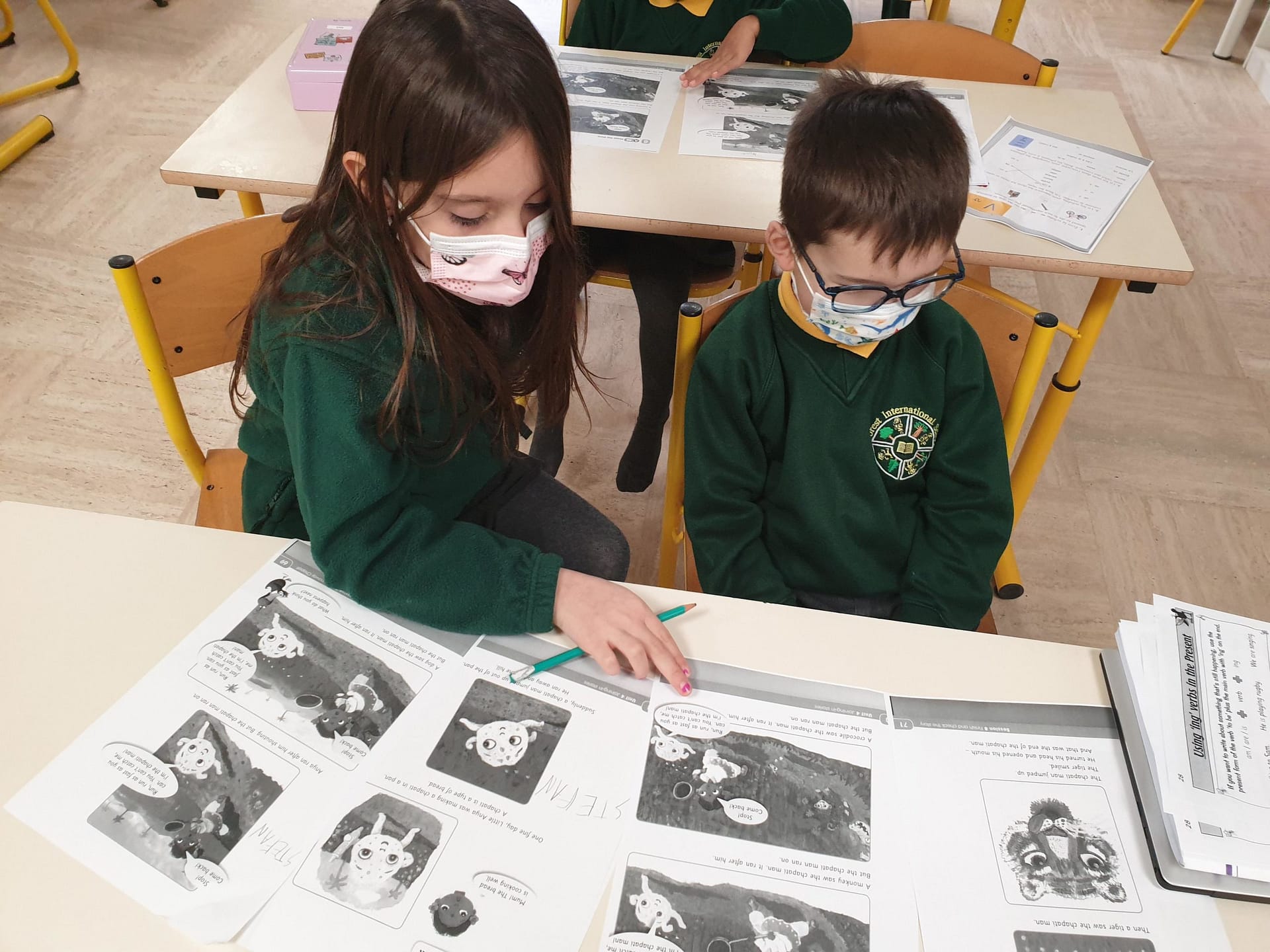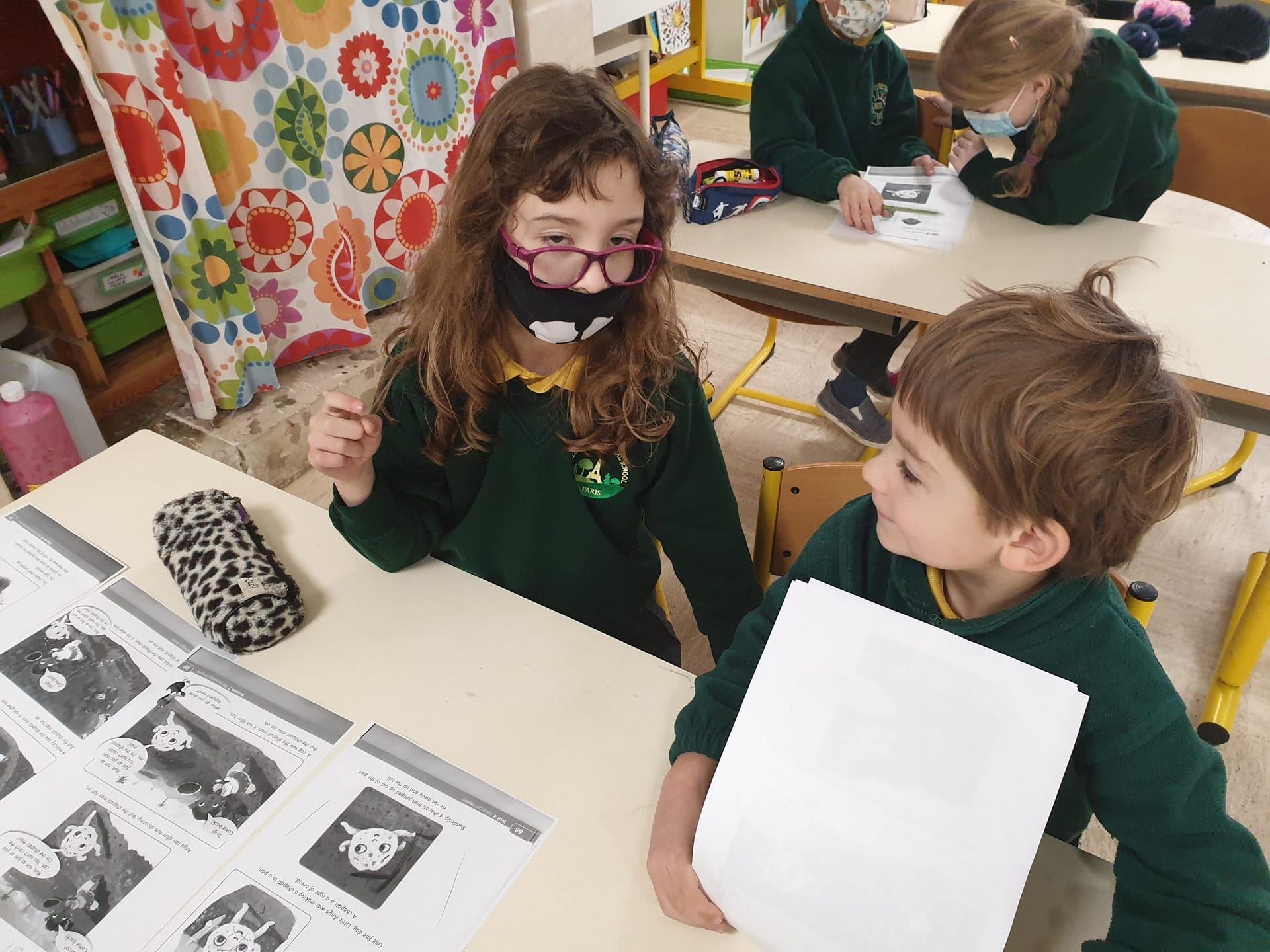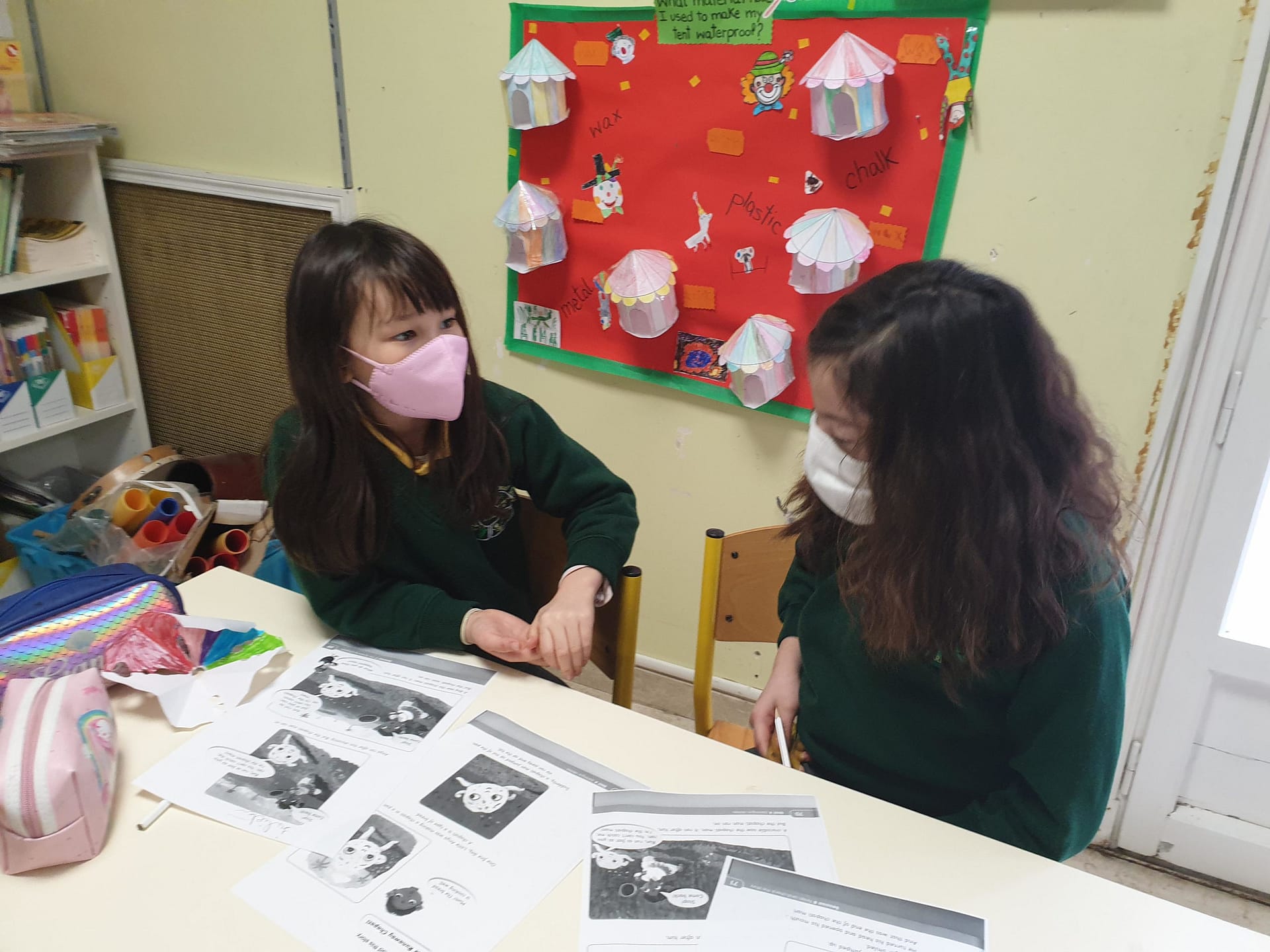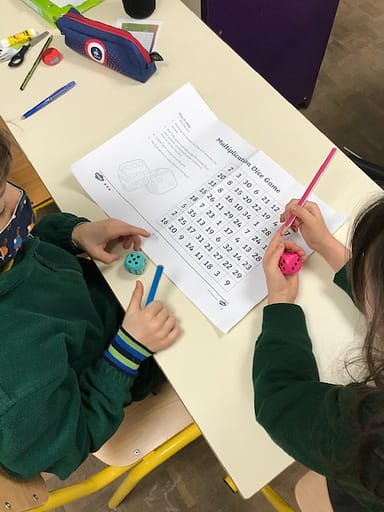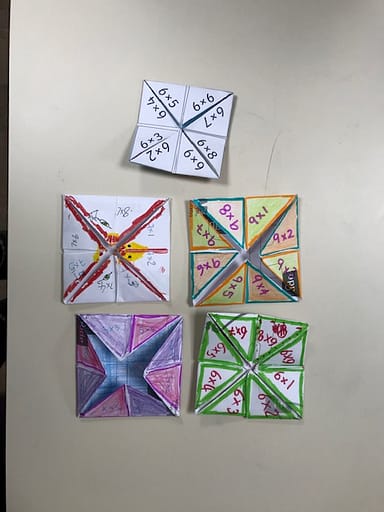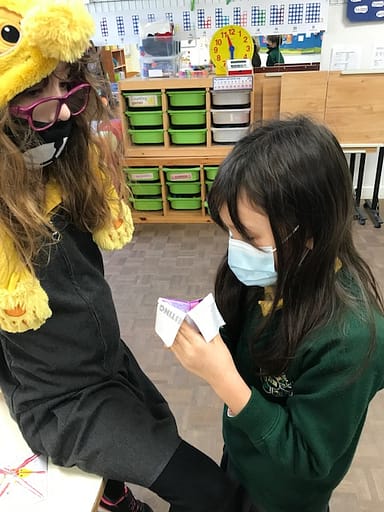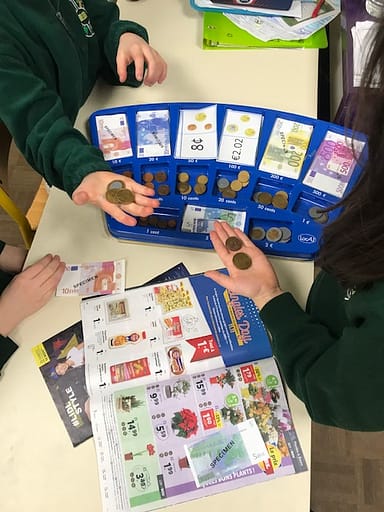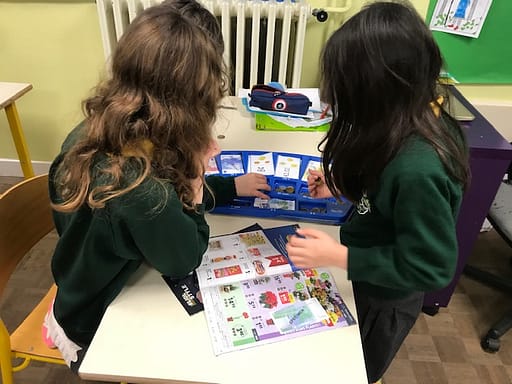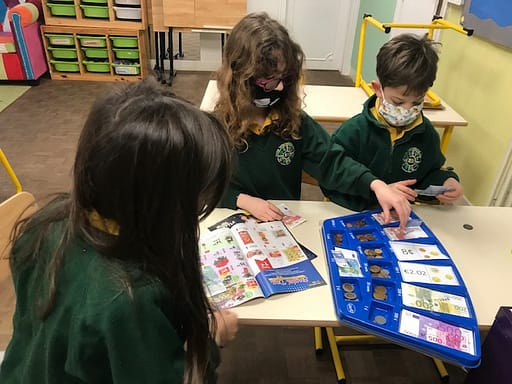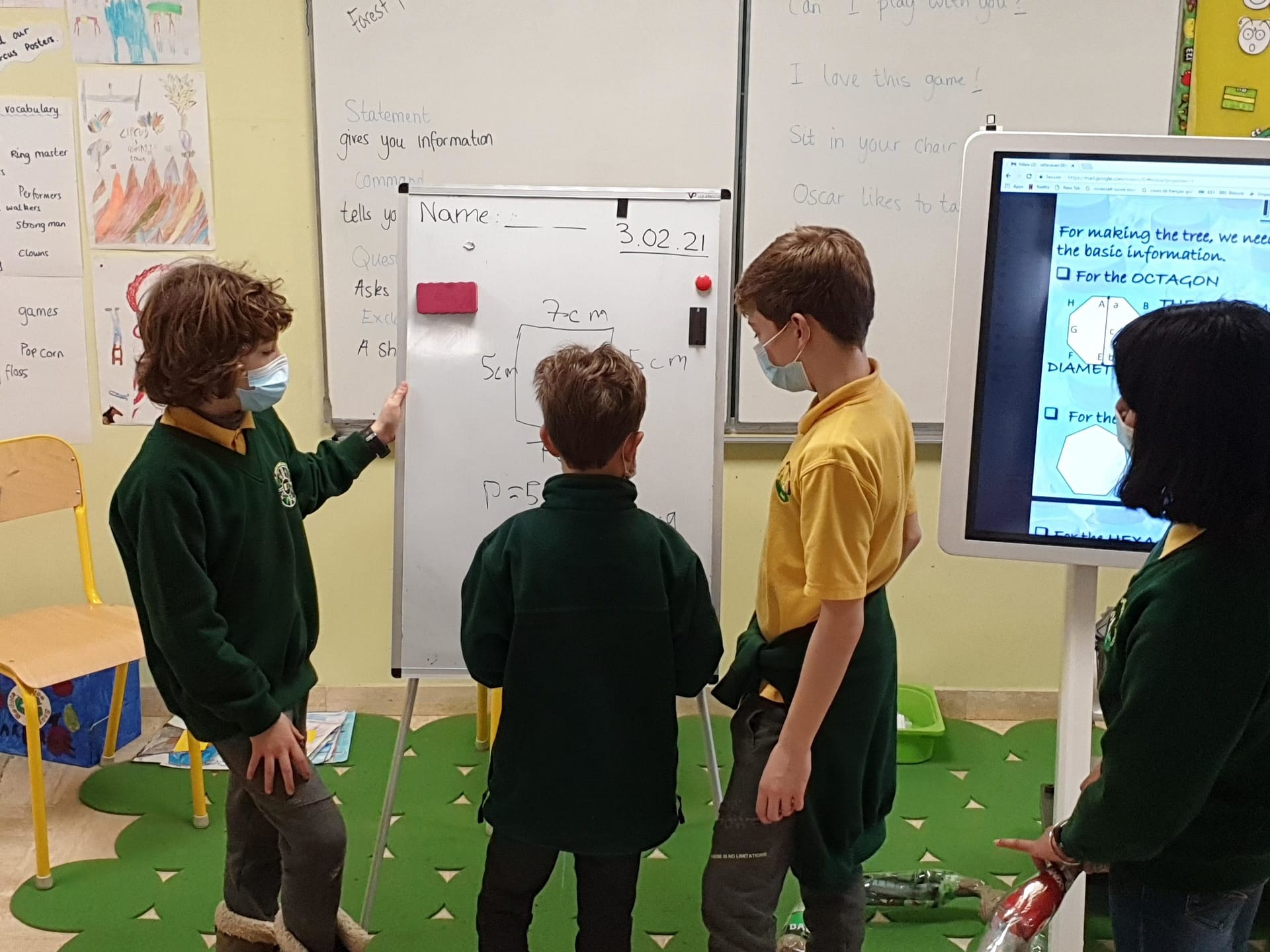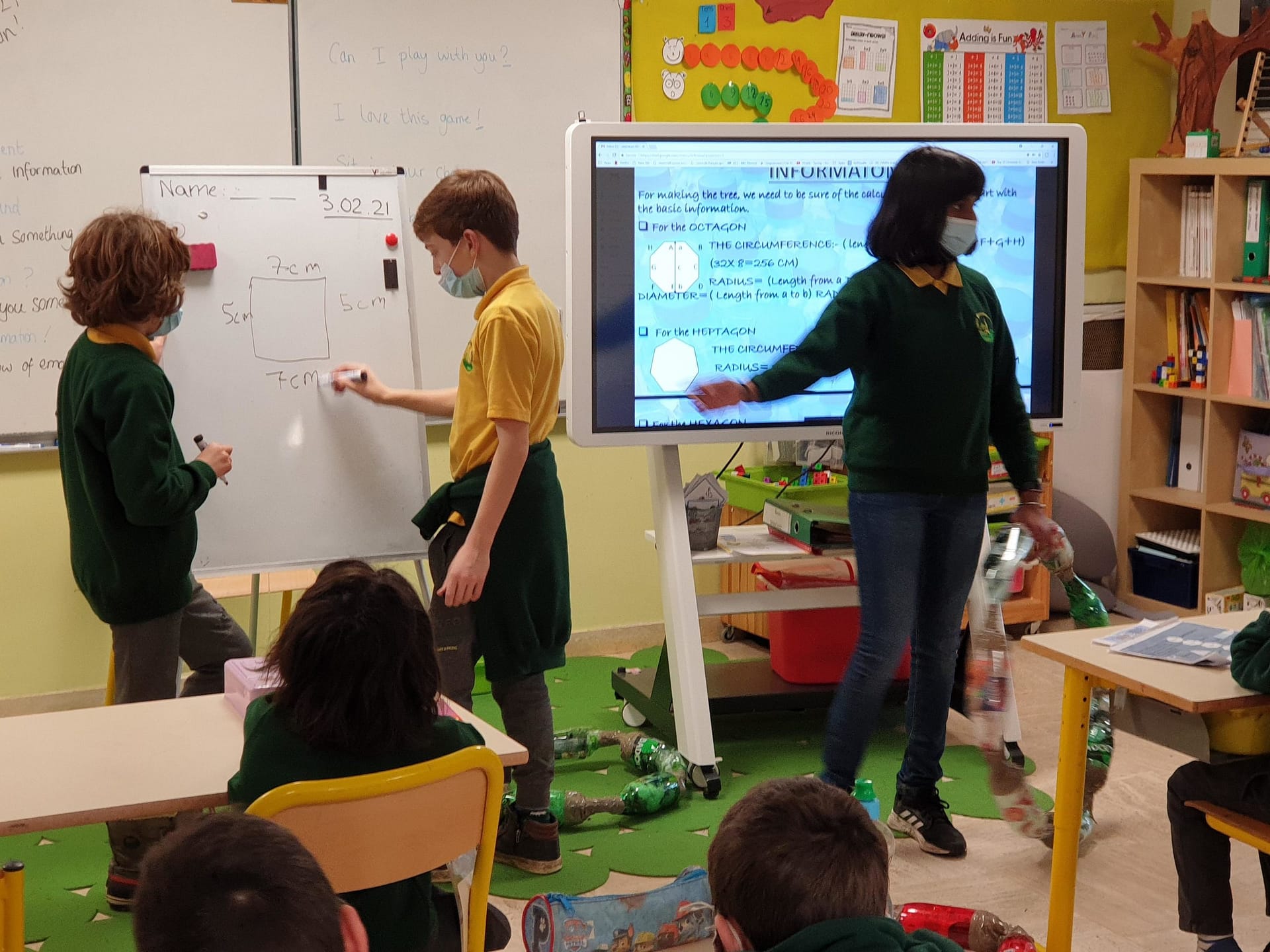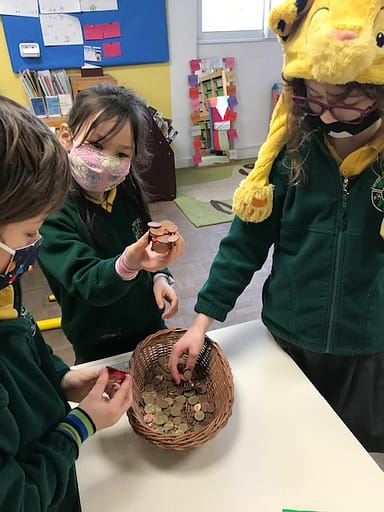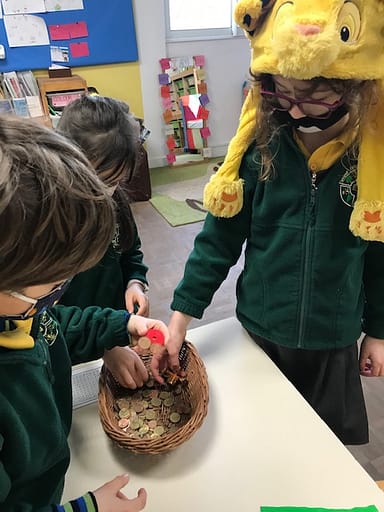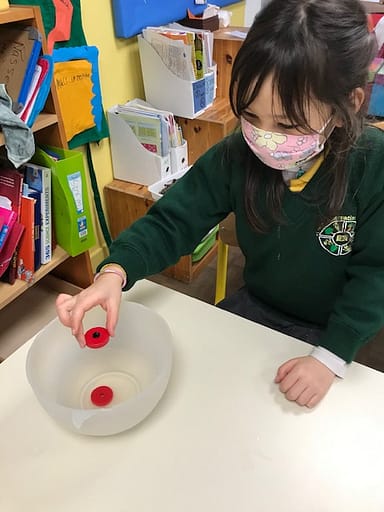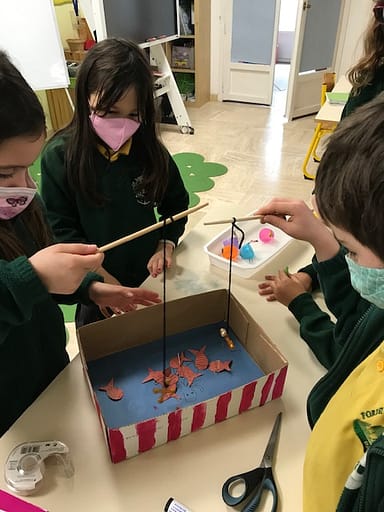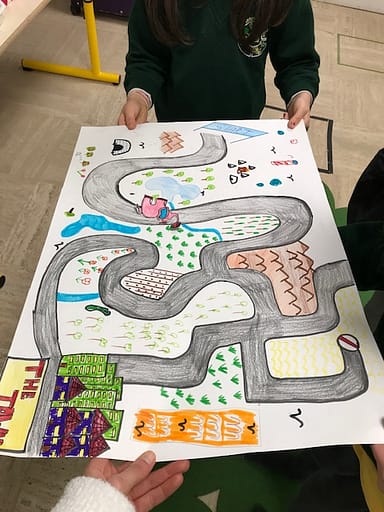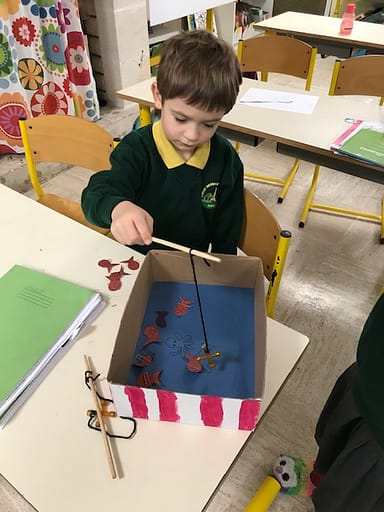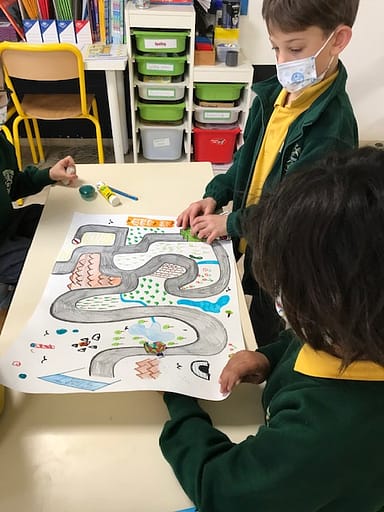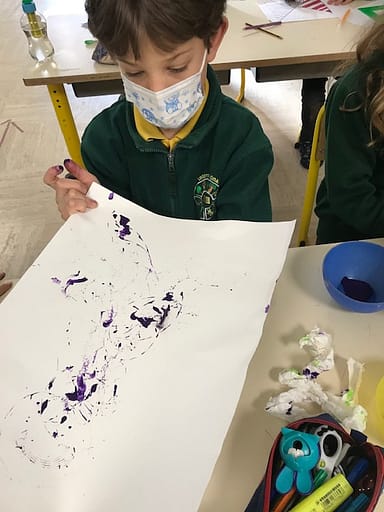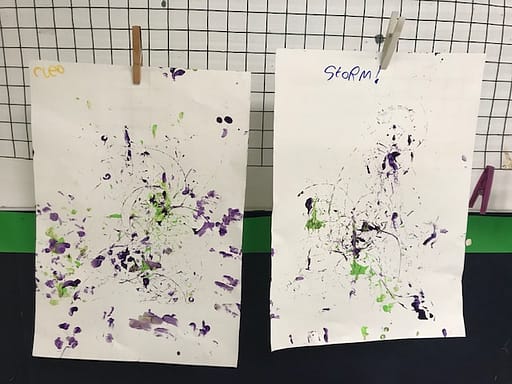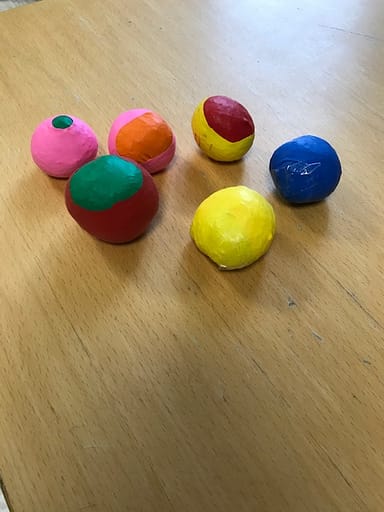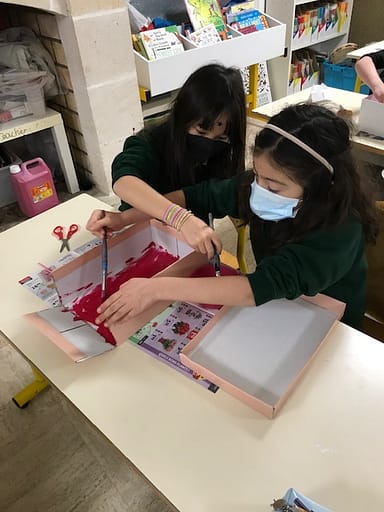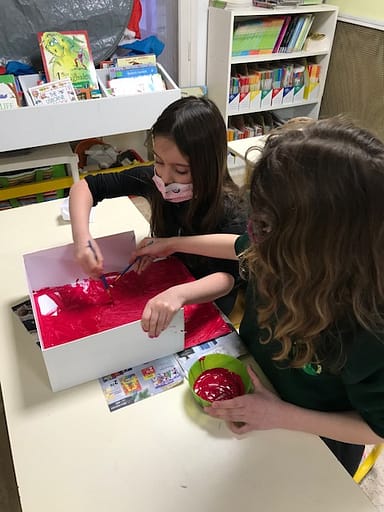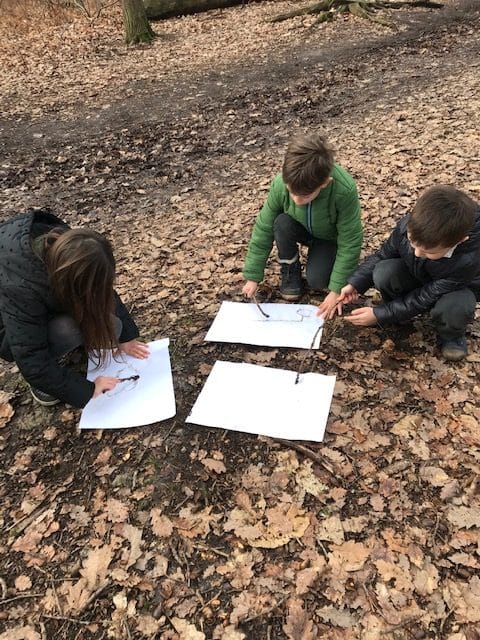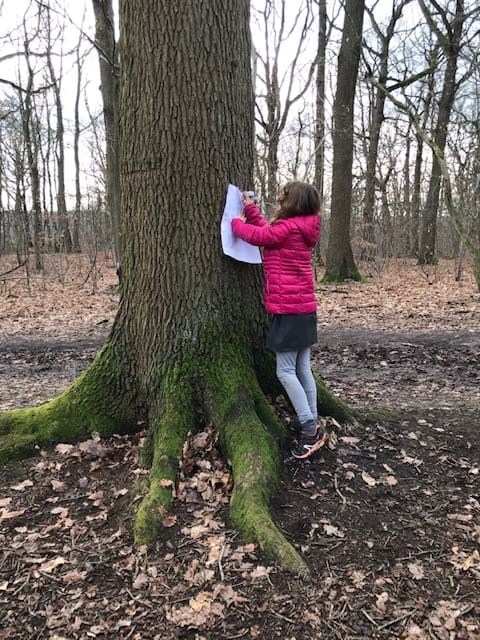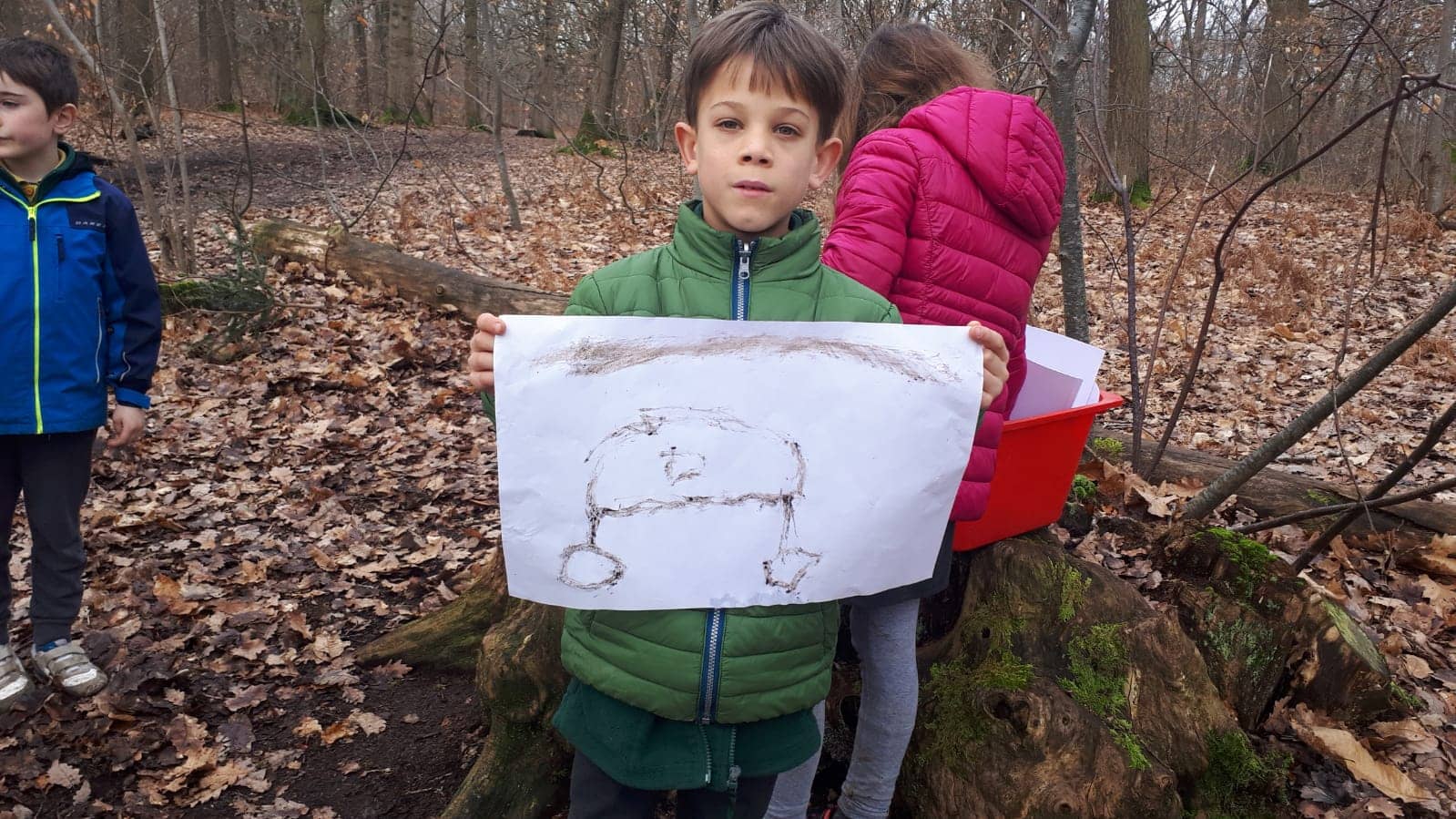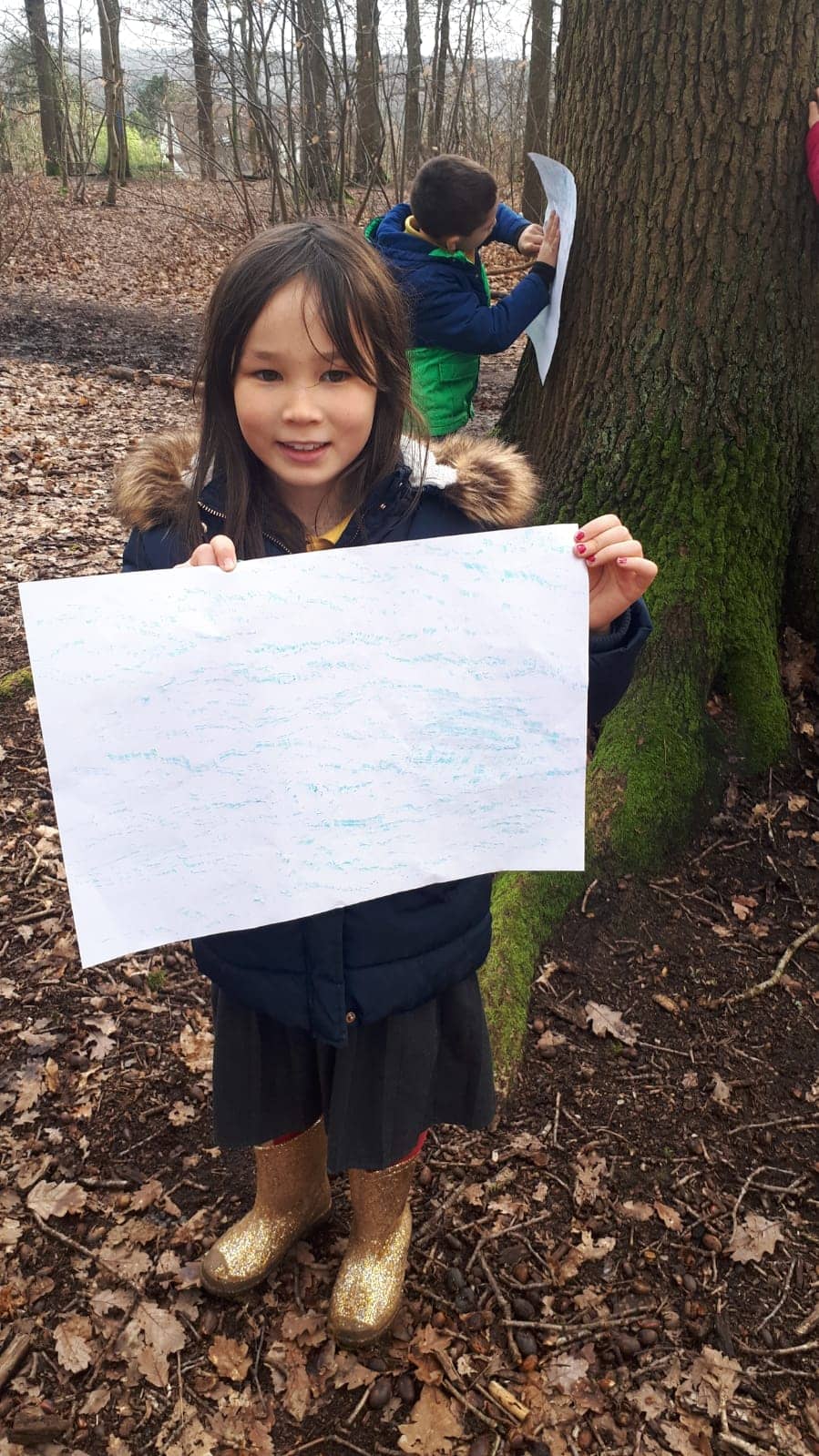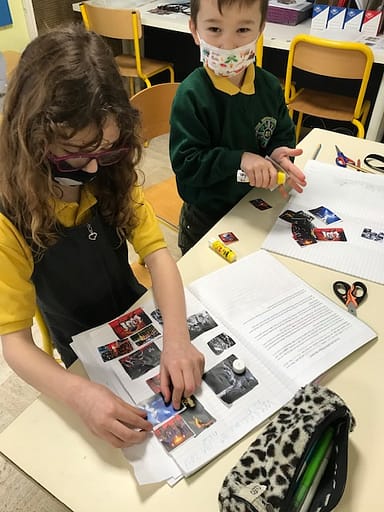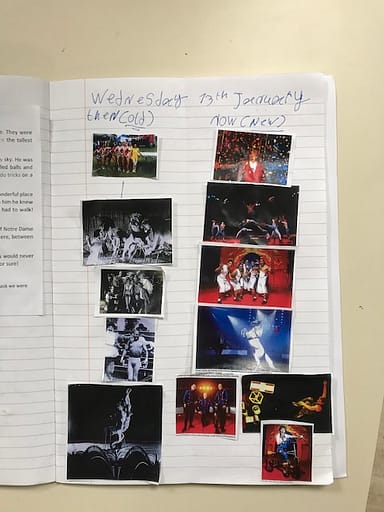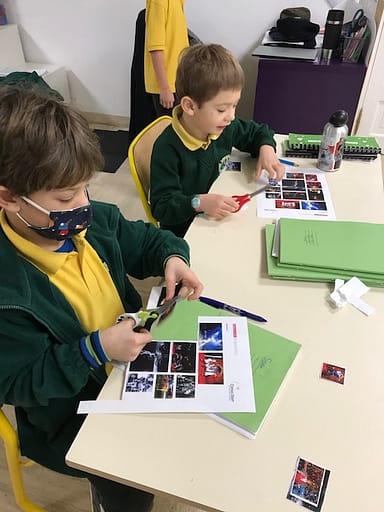MATHS
‘Equivalent fractions’
Last term we started recognising and representing fractions. This term, we decided to go deeper: calculating and identifying equivalent fractions and solving word problems that involve them.
Walnut class used our pizza game to find out different fractions that have an equal value.
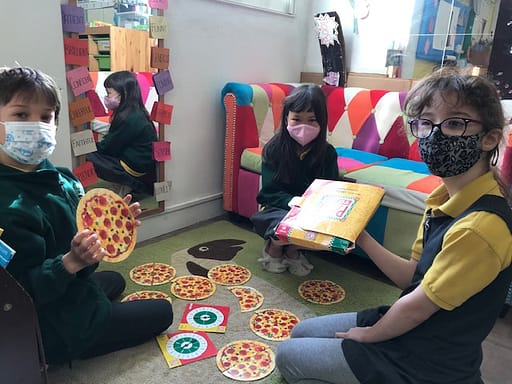
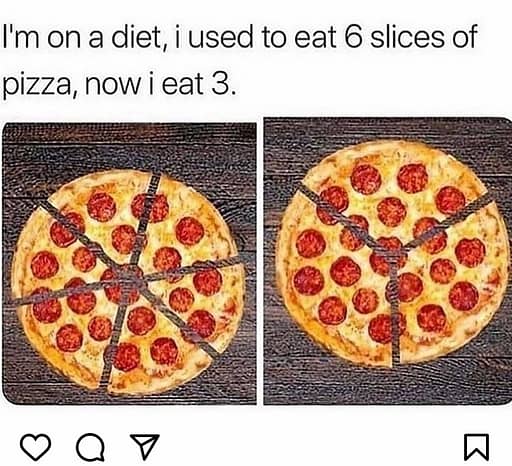
This picture was used to introduce equivalent fractions! 
Overlapping pieces of pizza, they could see several fractions which the same proportion of the whole.
‘Time’
Time is an abstract and complex concept. For this reason, Walnut class started learning it by using tangible materials, such as the toy clock! They were learning how to read and write time, as well as, doing some calculations.
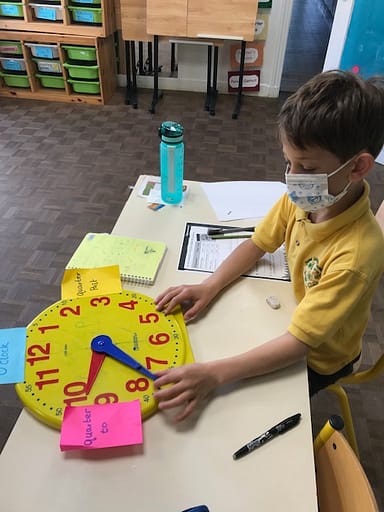
Also, pupils compared different kinds of clocks, in order to realise their similarities and differences.
LITERACY
This term, we have developed our writing skills and applied them to a range of different genres of writing. We used a range of books to find topic-focused vocabulary that could be used to support us when writing information texts.
Then, we looked at up-levelling our vocabulary by using a dictionary. This was an activity that we enjoyed doing. We found out the meaning of words and was able to use them in the correct context.
As part of our literacy lesson, we discussed different cultures and religions from around the world. With Walnut and Birch class, we used a large scale puzzle of the world to identify the different countries. As a group, we built on the knowledge and understanding that we already had of other traditions and cultures. Then we used what we had spoken about and wrote a text based on the country of our choice.
SCIENCE
‘Sorting out‘
This term Walnut and Birch class were learning the same content: Living things and their habitats. For this reason, we decided to put them together for our daily science lessons. In all, Walnut and Birch had two focused sessions together. This way, they had the opportunity to share their ideas and thoughts, as well as, to see different points of view on the same topic.
Pupils were introduced to the topic by sorting out several kinds of living things (animals, plants, mushrooms, bacterias, …) and by groups, they decided their own classification.
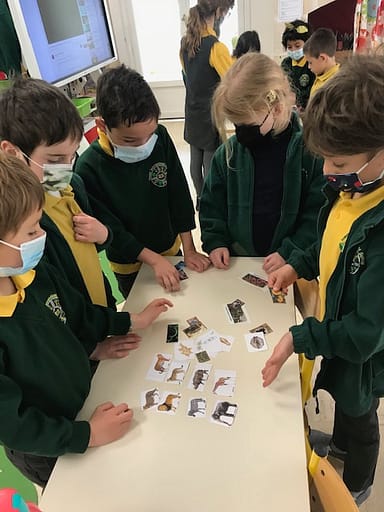
Group 1, under the leadership of Storm. 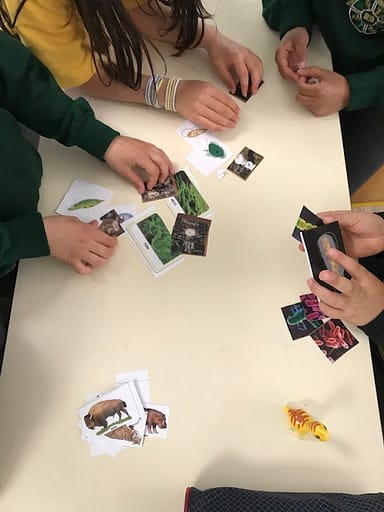
Sorting out! 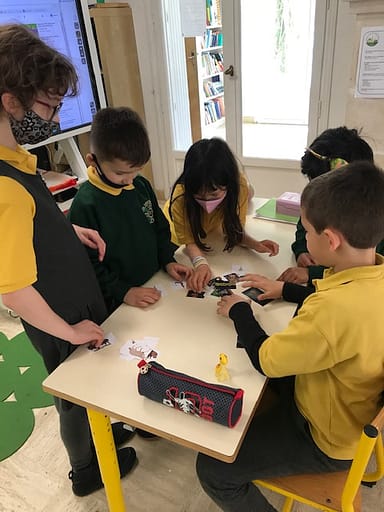
Group 2, under the leadership of Chlóe.
After exploring different classification criteria, they watched a video about five kingdoms. The principal aim was to make them understand why scientists decided to develop this sort of criterion and also, that each kingdom involves a certain type of living thing, which share common features.
We finished the session by drawing a conclusion and posting all pictures on our science display.
‘Going deeper’
In conclusion of the last sessions, Walnut class conducted research about the principal features of each kingdom. They collected ideas, which were represented on a diagram, showing how all kingdoms are related to each other, features and examples.
‘ Do you have your badge?’
Walnut and Birch class, put into practice all their knowledge about kingdoms and designed badges. They synthesised and represented the features of every kingdom in a drawing. Then, displayed them.
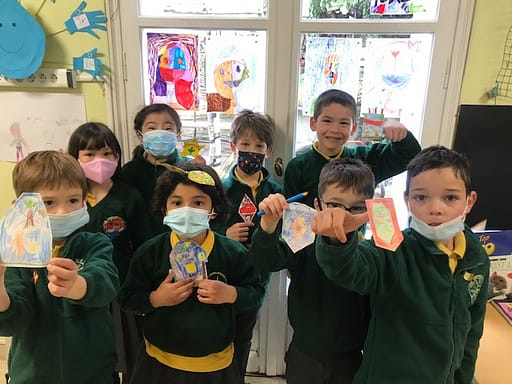
‘ Building their own habitats’
Who said that Art and Science are not linked? Pupils made fabulous mock-ups of habitats using their creativity, imagination, artistic skills and scientific knowledge!
Play-doh, plants, sticks from the forest, toys, images,… everything was accepted.
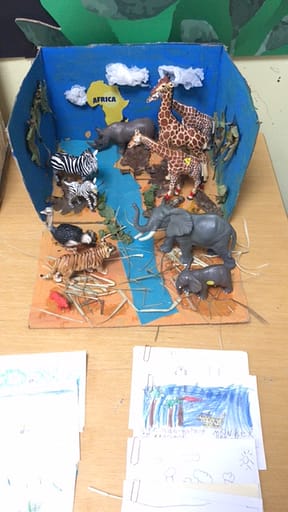
Savannah made by Storm and Oscar 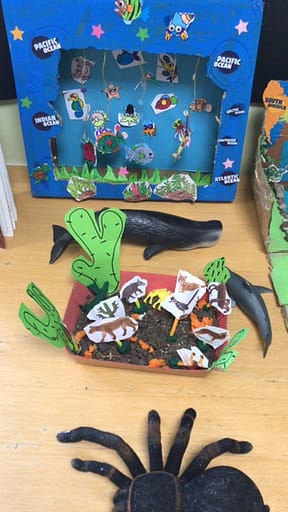
Deep Ocean made by Julieta and Mason.
Desert made by Samuel, Nina and Levi.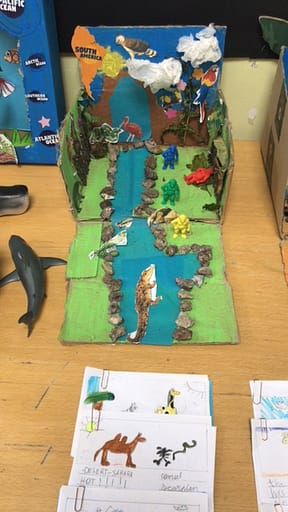
Rainforest made by Stefan and Chlóe
In every single habitat, it can be seen that suitable animals and plants have been placed Our pupils are amazing!

Pupils of all classes wrote down their feedbacks about our presentations!
They were so proud of their creations. For this reason, we decided to present them to the rest of the school at the end of Science Week!
We finished the presentations with a round of questions, where pupils were walking around asking their doubts about habitats.
Pupils of Walnut class also attended the scientific presentations of Maple, Oak and Elm class. Every single class presented their projects undertaken in their science lessons.
First, the Maple class showed what they had learnt about the four stages in the metamorphosis of butterflies. And we did Yoga! Ida, Maple’s teacher, represented these four stages as different yoga movements.
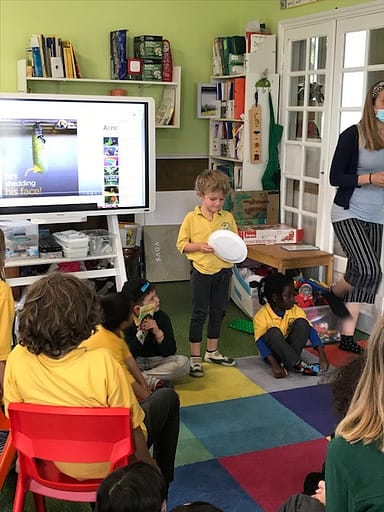
“Ulysses, pupil of Maple class, explaning the four stages in the metamorphosis of butterflies” 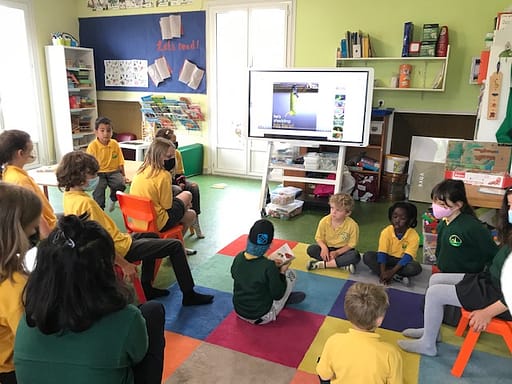
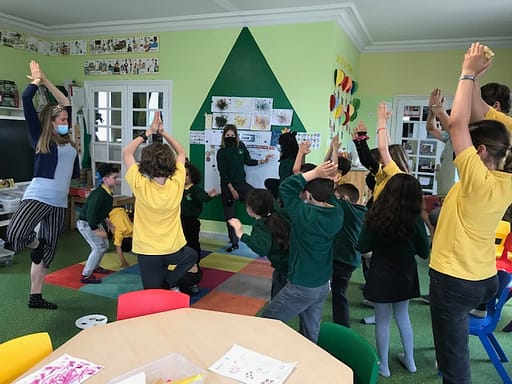
“Yoga Time!”
Second, Elm and Oak classes decorated their class for the Science Fair. There were different stations, where each pupil presented their scientific experiment.
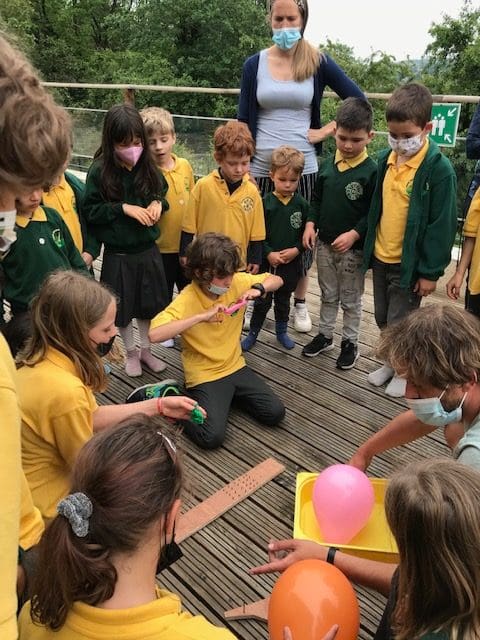
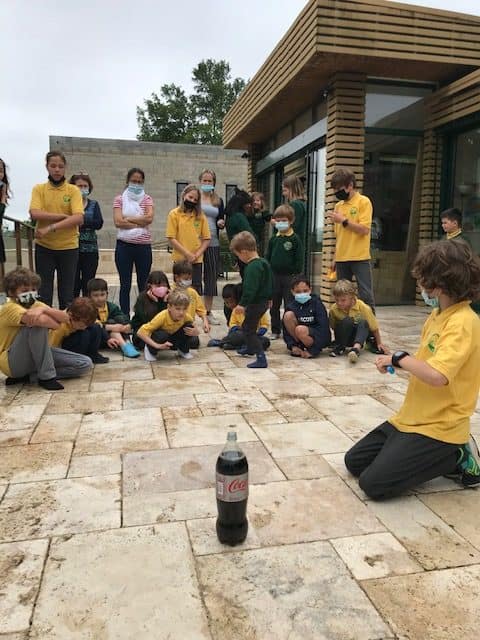
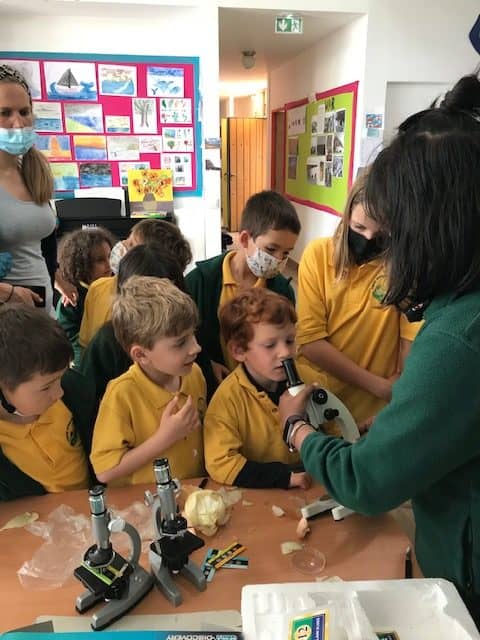
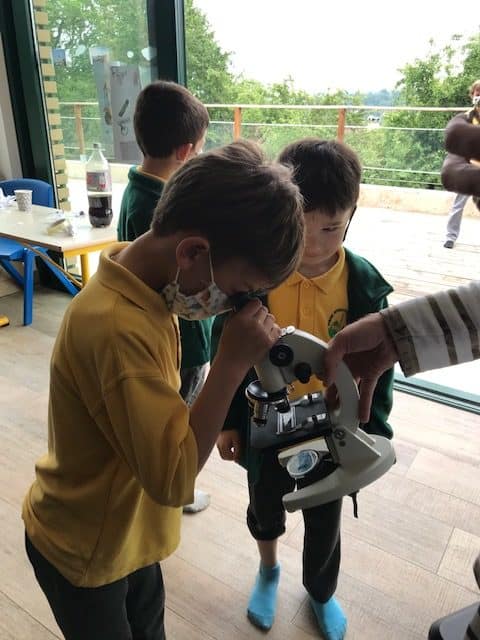
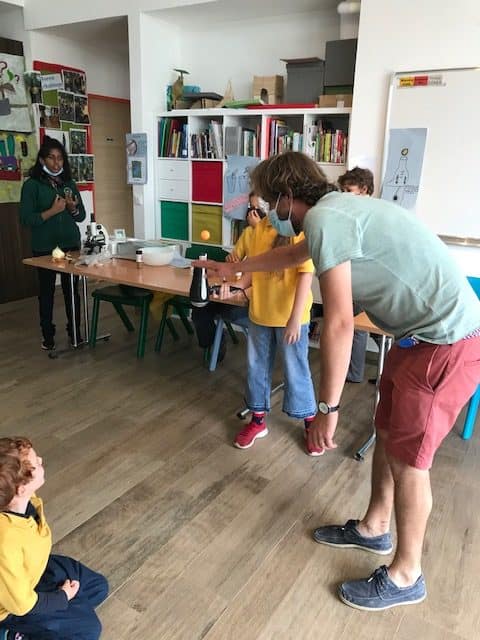
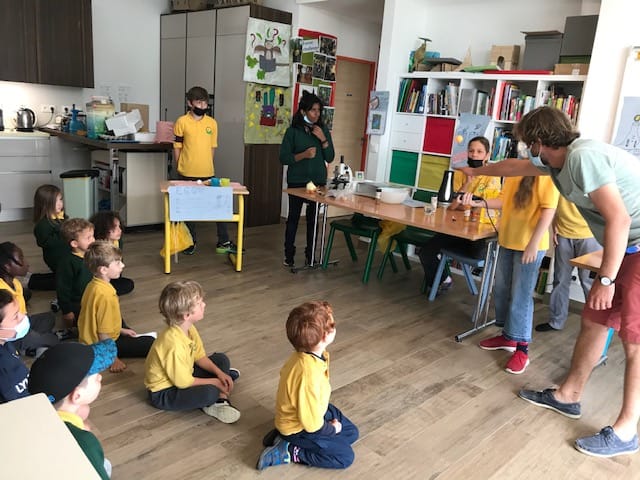
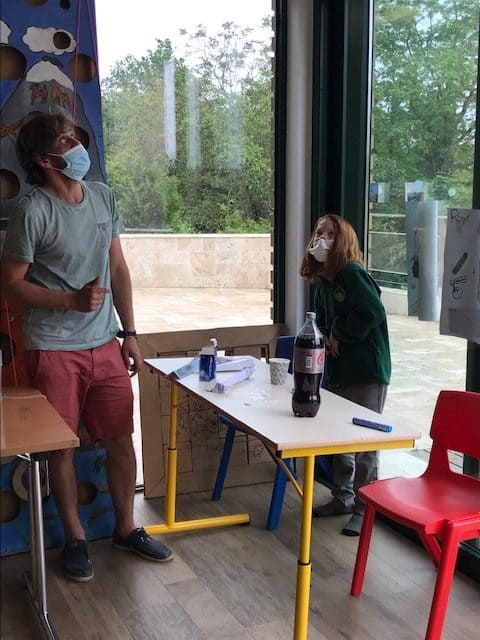
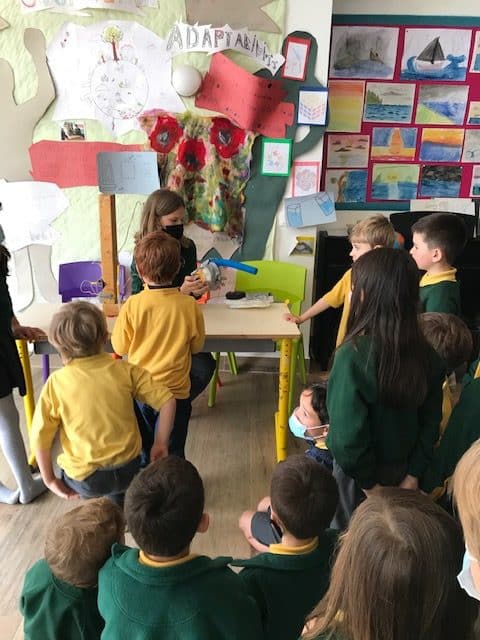
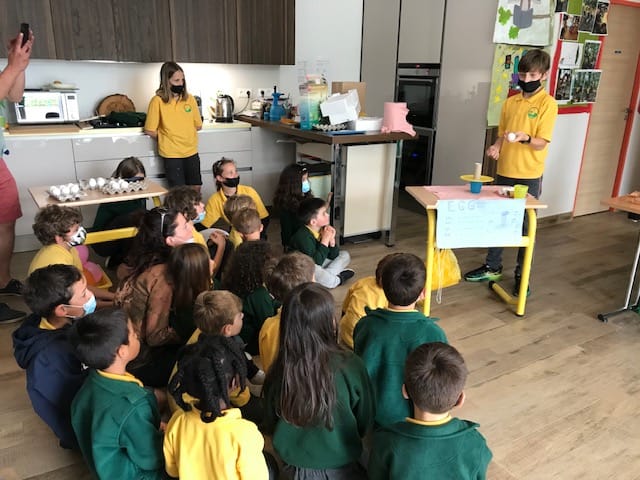
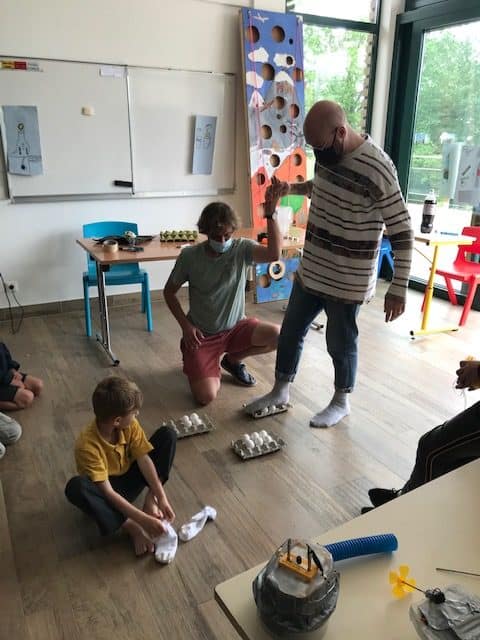
Arts
On the 1st of July, we celebrate “Sports Day”! All pupils, families and teachers were reunited to celebrate!
As in every sports ceremony, there is a need to have a podium, in order to announce the winners! Walnut and Birch class used their mathematical and artistic knowledge for making a DIY podium.
First, they designed their podium with different sizes, shapes and styles! Our pupils are amazing!! In their designs, they had to write which tools and materials they were going to use.
Then, teachers provided them with some wood and tools to make their podiums come true.
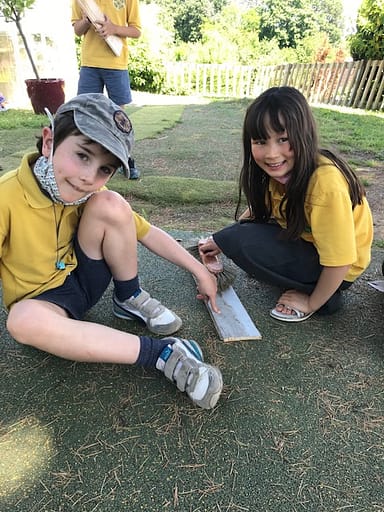
Cleaning the wood! 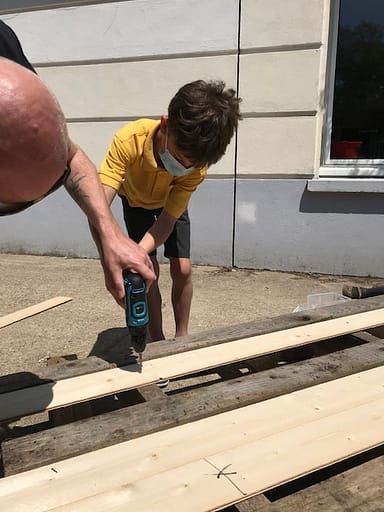
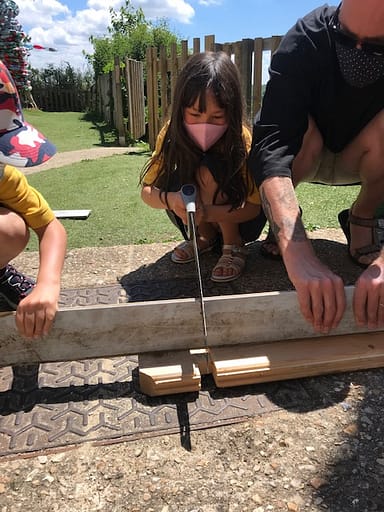


All pupils worked cooperatively, sharing ideas, knowledge, materials,…
TIE DYE T-SHIRTS
We spent one art and craft session designing our t-shirts for the big day: The show!
Our pupils brought a white t-shirt and dyed it with beautiful colours! The results were impressive! All t-shirts were different and fabulous!
3-D Workshop
We learnt about the basic 3D shapes and was able to explore and identify those shapes around us. We heard that Maple class were learning about 3D shapes too. So we decided to create a workshop with them to support their learning of this concept.
First, we watched a video that gave us information about 3D shapes and their properties. We then explored the classroom looking for 3D shapes. Naming the shapes we had found and discussing their properties. From this, we drew some 3D shapes then we got to use clay and molded the shapes carefully using our fingers.
TRIPS
‘Cité des sciences et de l’industrie’
We went to an amazing place to broaden our scientific knowledge; I am talking about the ‘Cité des sciences et de Industrie. This space provides people with scientific and technological knowledge. According to their ages, our pupils went to “La Cité des enfants”, where they could put into practice all their knowledge of electricity, hydraulic energy, saving water, design and technology! Also, practiced some writing, as can be seen in the picture below.
‘Musée du Jouet’
Pupils went to the ‘Musée du Jouet’ in Poissy, where they had the opportunity to discover another era through old toys, dates between 1850 and 1950. For instance, porcelain dolls, dinettes, boats, stuffed animals and puppets. Also, this museum is installed in the gatehouse (fourteen century) of the former abbey of Poissy, so children could discover the magnificent architecture of that era! At the same time, they were improving their French by increasing their vocabulary. Marie, our French teacher, came with us in order to provide children with interesting facts and information related to those toys, as well as, their history.
SWIMMING
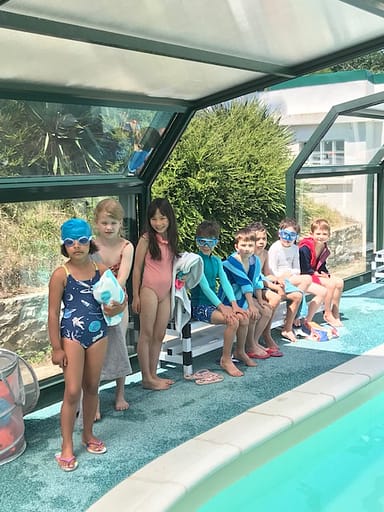
Pupils had the opportunity to improve their swimming skills in our swimming pool. They practised how to dive headfirst, take hidden objects from the bottom of the pool, swim front crawl…
FOREST EXPLORATION
As always the forest is a good opportunity to explore, run, climb and play! They improved their fine and gross motor skills, as well as, bonds with their classmates. Pupils used their imagination of being in amazing places, in the rainforest, desert,… playing different roles explorers, hunters,… by using objects found in the forest they developed their imagination and creativity.
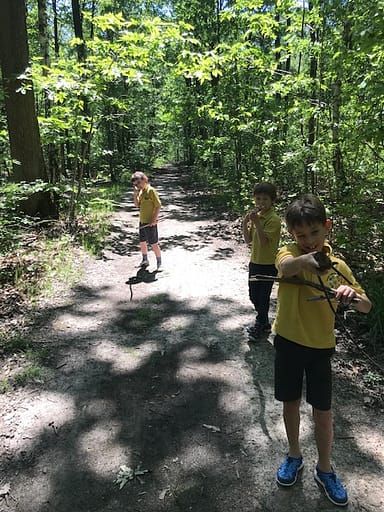
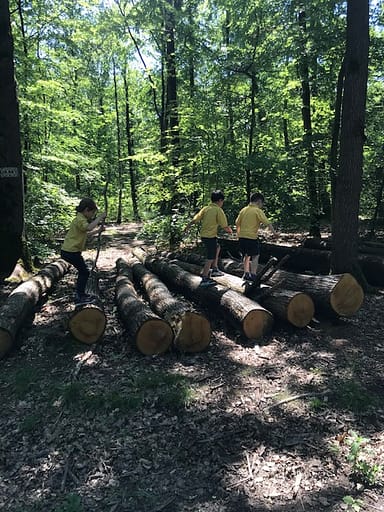
Be careful the floor is lava!
SPORTS DAY
On Thursday, 1st July we celebrated the sports day in the forest! Birch and Walnut classes were split into groups and they competed at different stations, already prepared for them by the teachers ( high jump, long jump and 100 metres).
There was a teacher in each station in order to record the points to announce the winner at the end.
Parents and teachers took part in the celebration, too!
FRENCH AND IPC FRENCH
Please, find attached the French section, where you can find some of the activities and objectives achieved by the Walnut class. I hope that you enjoy the document made by Marie, our french teacher.

